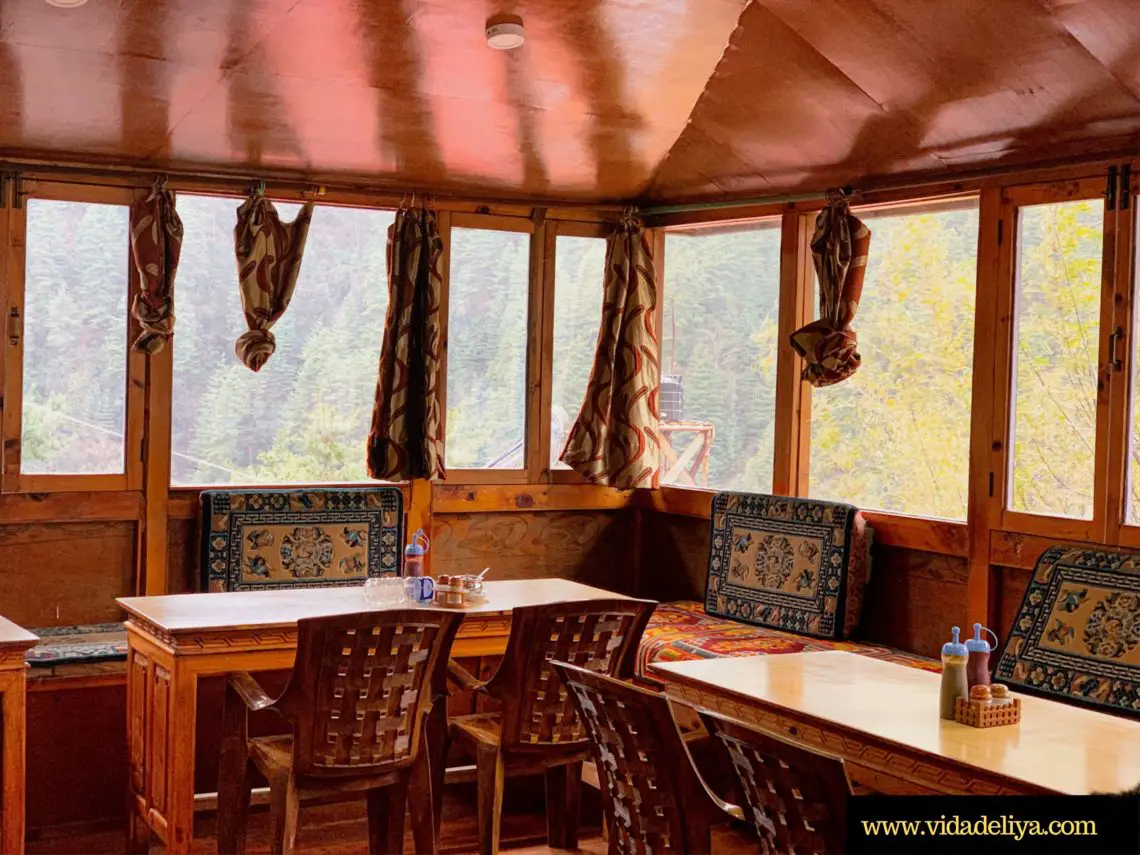
Ultimate Everest Base Camp Food Guide
What’s the food like on the Everest Base Camp Trek?
That might be one of your main concerns when deciding whether to hike to the base of one of the most famed Himalayan mountains. And understandably so.
An EBC trek tends to last around 12-15 days, depending on the route you are taking and number of acclimatization days you require. And to get through 6-8 hours of hiking every day, your food and drink become one of the most important, daily issues you will face on the trek.
Hence this Everest Base Camp food guide, to ensure that you know everything you need to know about food (and drinks!) when hiking up the Himalayan mountains.
Table of Contents
Realities of Eating on the Himalayan Mountains
But before I spill the details on the food, here are some important principles to remember:
- All your food will likely be served at the tea houses you are staying in.
My group paid a lump sum to our organiser who allowed us to order anything off the menu (1 meal and 1 drink, 3 times a day).
If you are paying for your own meals and drinks, you might find that certain tea houses don’t levy an accommodation cost, so long as you eat at their place. It is the only way that these tea houses earn any income, apart from charges levied for charging your devices and hot showers (if you dare!!!).
- A lot of the food comes from Kathmandu.
Meat, for instance, is flown down to Lukla and carried on the back of human porters up to each of the tea houses/ accommodations along the EBC route.
You do see vegetables grown in small farms as you are trekking, but at a certain point, you will hike above the tree lines. No trees or greenery can survive from here onwards.
Even the locals have to make weekly trips down to the commercial hub of Namche Bazaar to get your weekly necessities including rice (I know this because I bumped into one such local!).
- The locals here believe that animals like yaks are sacred.
They don’t kill any animals. So all the meat is flown in. This means that if you’re on day 5 of your hike, well… you really don’t know how long the meat has been out and on the road for.
It’s why the general rule is to avoid all meat, although some people have eaten yak meat high up in the mountains and had no issues. But it is still a risk you are taking. Tuna is fine since it’s canned but fresh meat? Well…. maybe not.
But it’s your choice and a risk that you take!
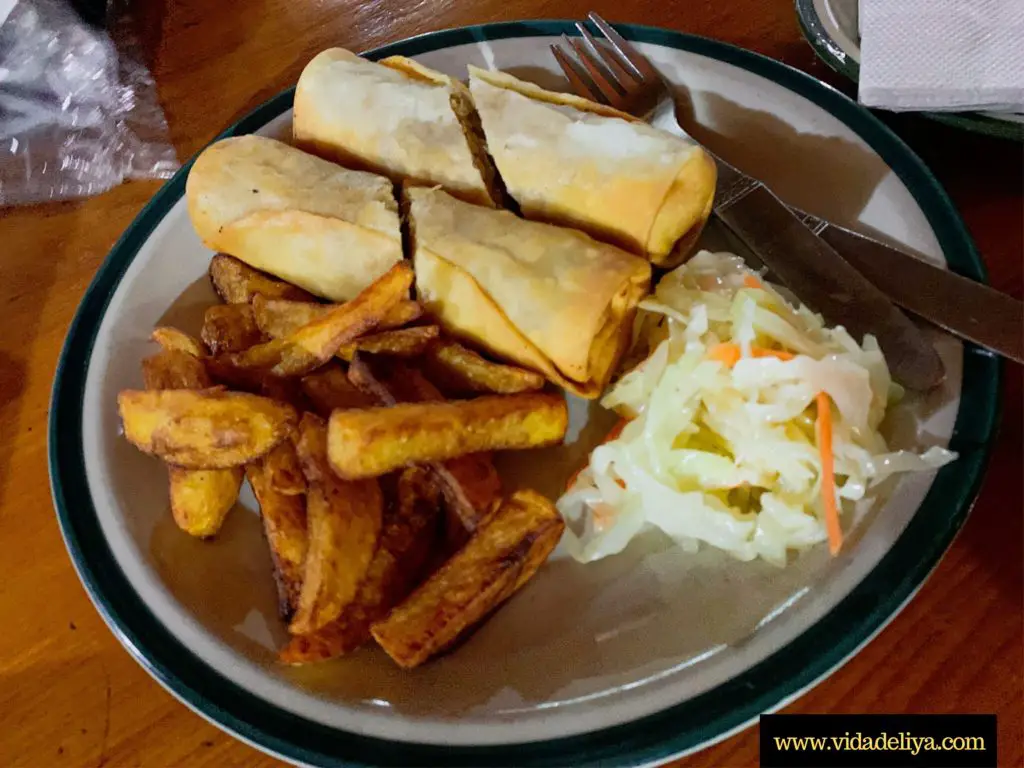
- The menu is generally the same at all of the tea houses along the way to Everest Base Camp.
Seriously.
I’ll be detailing the menu for every tea house we stayed in in other Everest posts and you will see the same things pop up. Eg dal bhat, momo, RaRa noodles, pizza with yak cheese, pasta/macaroni, apple pie with custard, fried chips with fried eggs, porridge and potatoes.
All of their menus are printed and laminated, very professional, but the content is nearly identical. The only difference is the exact variety that’s offered.
For instance, you will find potatoes offered at every tea house but only certain tea houses offer mashed potatoes whereas fried potatoes are on the menu at almost every tea house you’ll encounter.
- You will likely lose your appetite the higher up you go.
I know I did, almost instantly. It’s a weird feeling. To hike and feel strong hunger pangs, then finally arrive at my destination and sit down to order a nice yak pizza. But the moment it comes, I feel this huge weight pressing down on my stomach as though I had just eaten a TON and if I ate anything more, I would throw up.
But of course I hadn’t.
I just couldn’t eat.
Which is why having things that are easy to consume like porridge proved such a lifesaver in my final days on the Mount Everest Trek.
- Try all of the most adventurous things in the first or final few days of your hike.
You won’t have to battle with altitude sickness yet. Your toilet facilities are likely to be much better. The ingredients used are likely to be fresher.
And you will still have your appetite!!!
Towards the end all I could stomach was half a bowl of porridge and even that was a huge struggle, which was shocking for me as a foodie.
So I’m glad I went all out and tried all of the things I wanted to try in my first few days. And that I didn’t have any stomach issues thereafter.
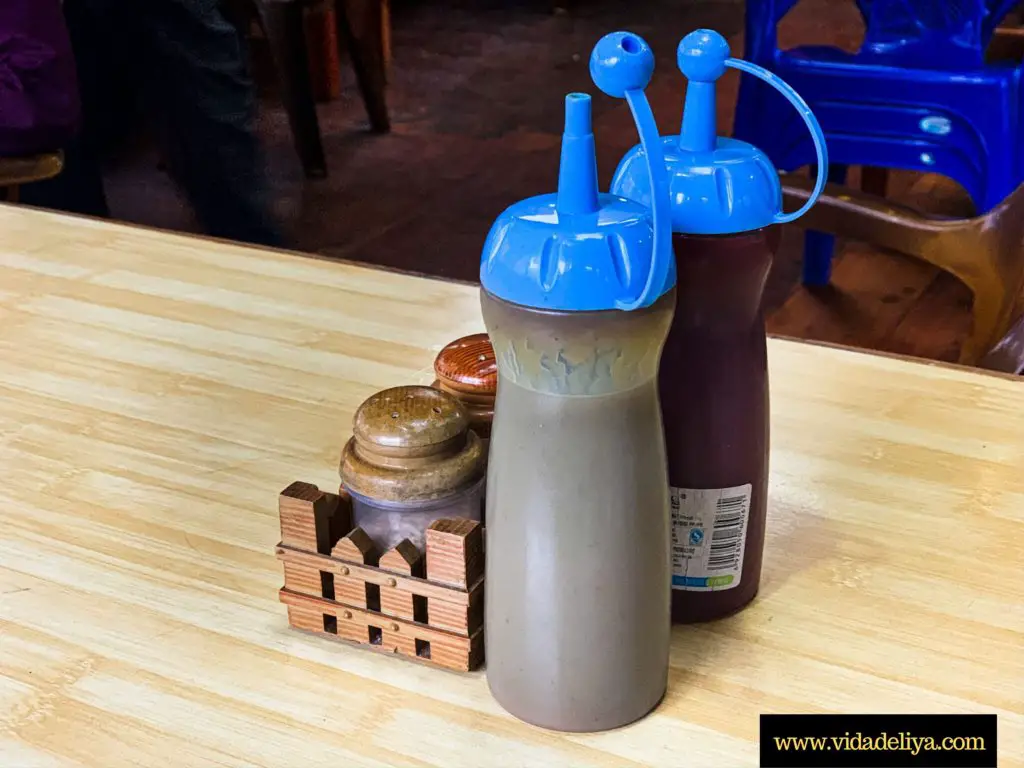
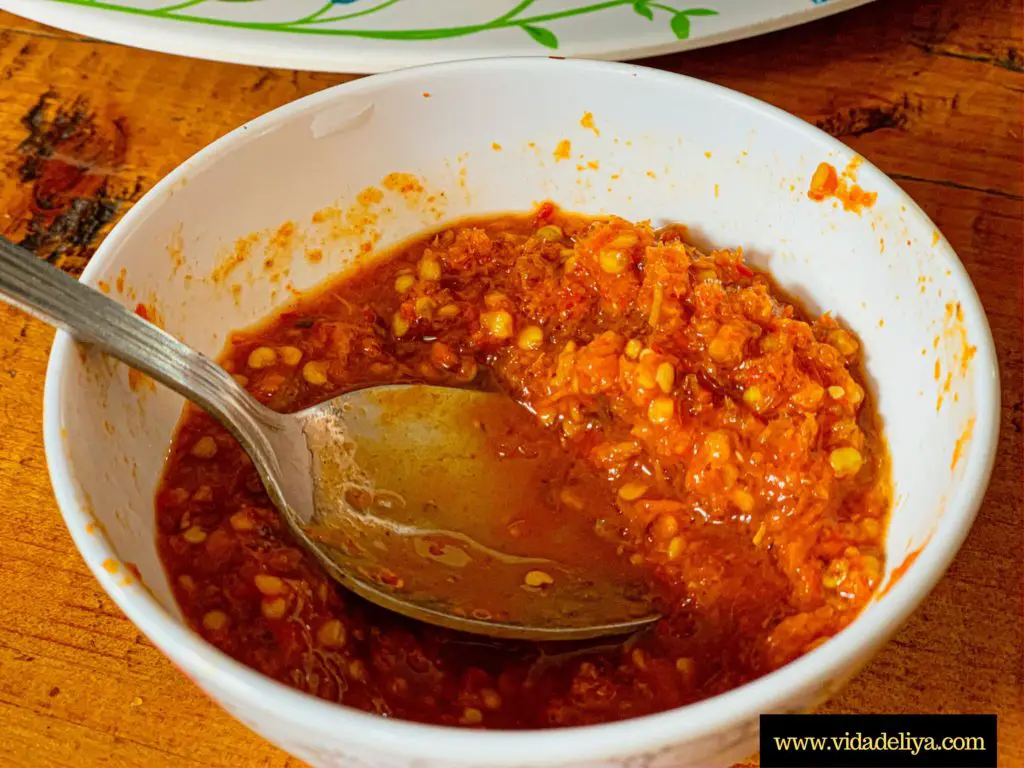
- Every tea house will offer you some red and green chilli sauce in a bottle.
The chilly bottles will already be placed on the table. They also have chopped chilli (right photo above) which is great – and extraordinarily spicy!
My personal favourite is the green chilly sauce – not terribly spicy but it gives a good kick, and is also pretty sour!
The sauces go well with the majority of the dishes you will order.
- Sometimes, the menu will say you get a certain dish only for the actual dish to come out with some missing ingredients.
Like apple and cinnamon porridge, only there wasn’t any cinnamon in it. Not a big deal, but it is something that happened.
And higher up in the mountains, we noticed that our orders of “hot honey lemon ginger tea” tended to be just “hot lemon tea” with missing ginger and honey (which you can ask for and it will come in a small saucer).
Some of the Himalayan tea house food listed here will be familiar in that you will recognise them even if you’ve never been to the Himalayas or gone hiking before.
However, all of the dishes have been given a local twist. For instance, you have the popular and ever-present pizza BUT they come with yak cheese!
Types of Everest Base Camp Food Available
Breakfast
Depending on your hiking schedule for the day, breakfast can be anywhere between 5 am (I kid you not; it was also absolutely freezing) to 8 am.
RaRa Noodles
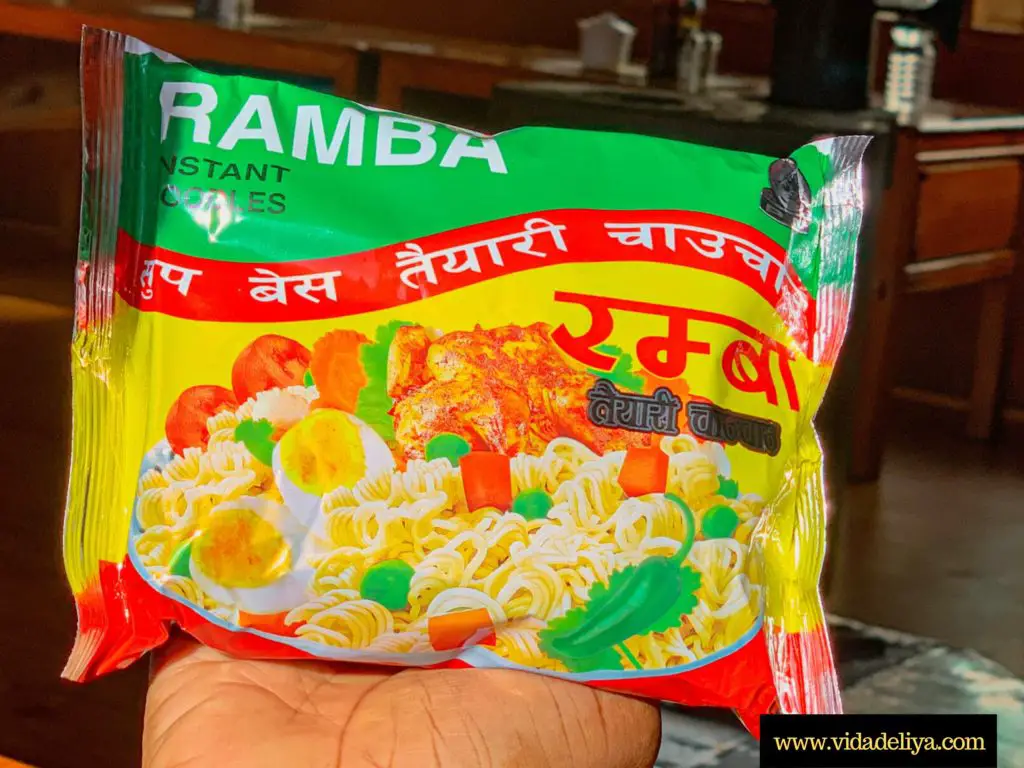
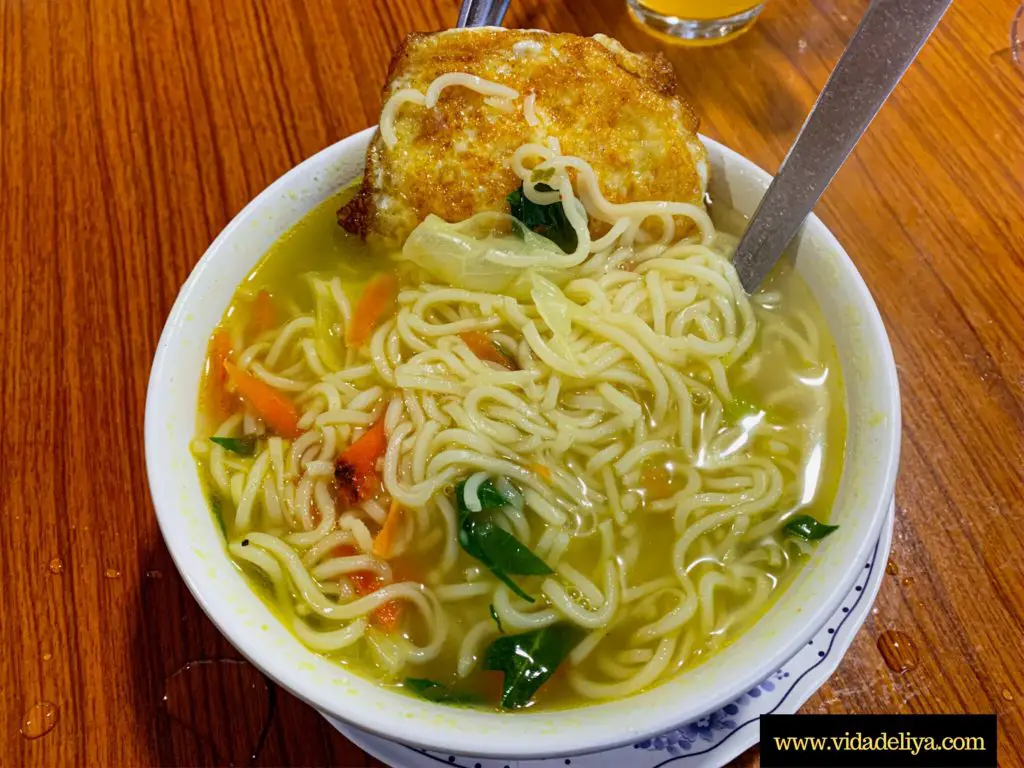
I know what you’re thinking – what in the world is RaRa noodles?
If you’re Malaysian then you’ll have had Maggie Mee soup. RaRa noodles taste almost exactly like Maggie Mee soup so it was like a taste of home on the mountains.
For those unexposed to Maggie Mee, RaRa soup is instant noodles cooked in soup with vegetables thrown into it. The RARA instant noodles are white instant noodles that are pre-cooked, seasoned with masala spices, and fried prior to being packaged and sold.
Pretty tasty, wholesome, hot and fantastic to kick off the day with.
Our guides loved it and often had it for breakfast. It’s why we ordered it in the first place! Turned out to be something of a comfort food.
Tibetan Bread
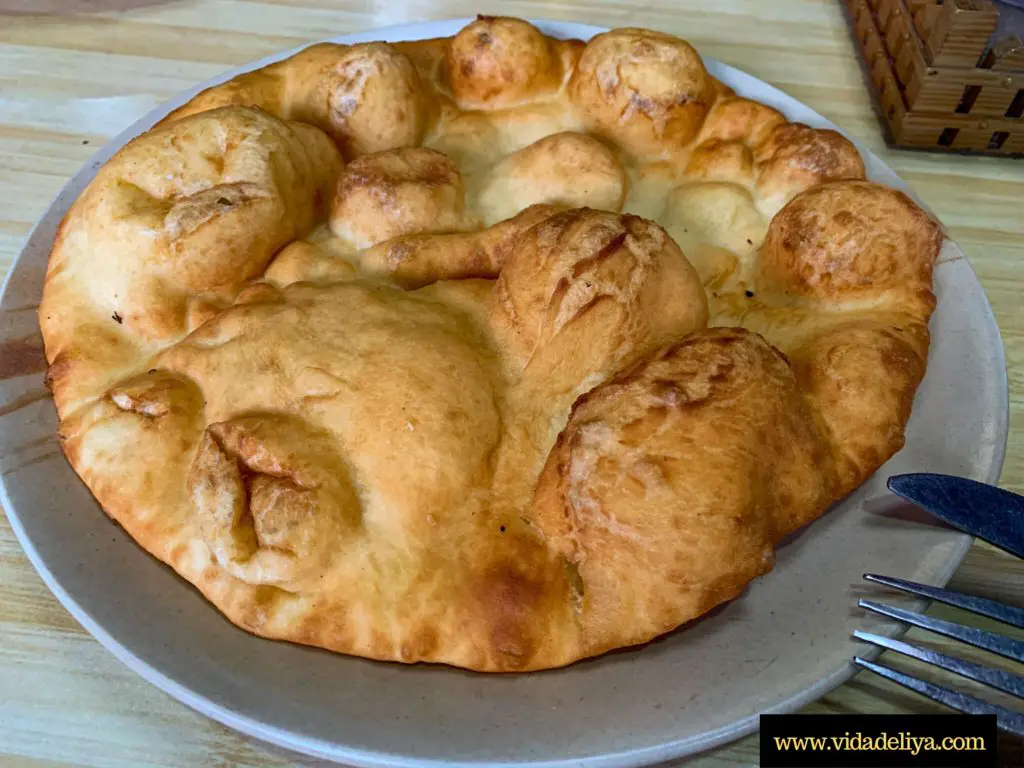
I was so excited to try Tibetan bread as it sounded so exotic.
What Tibetan bread really is is a large piece of fried bread that you can eat with jam or honey.
It’s great when it’s hot but harder to eat when it’s cold. It’s also incredibly dry. So I stopped eating this at higher altitudes when my appetite left me and I couldn’t stomach anything that didn’t resemble hot baby food. 😔
French Toast
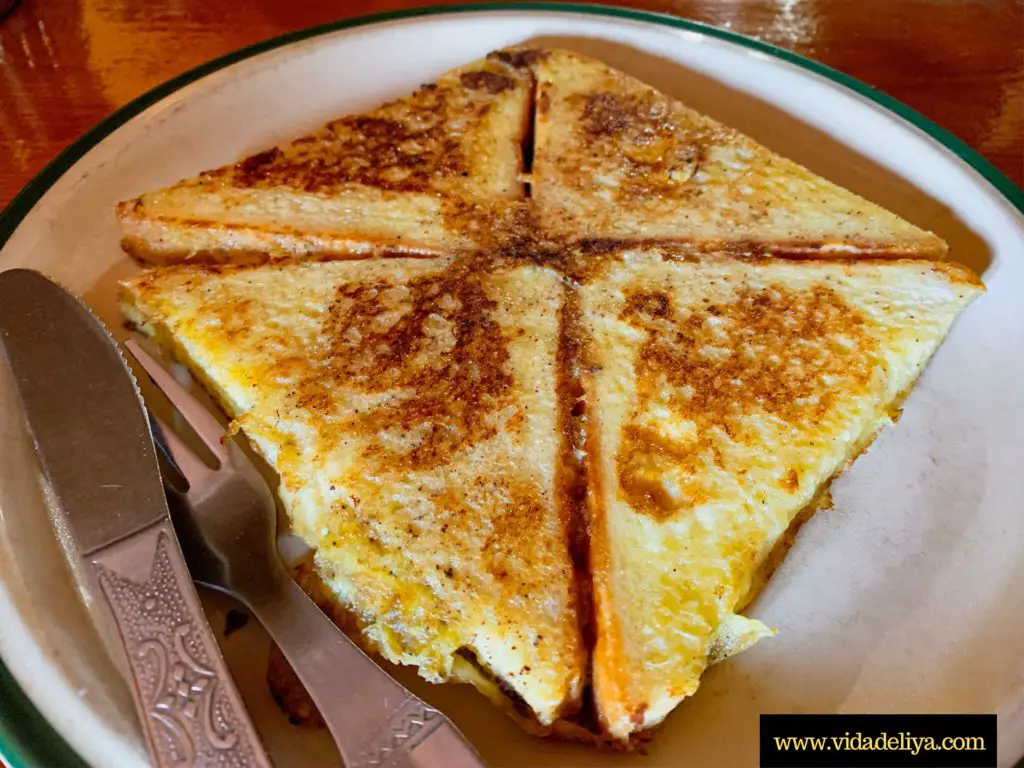
The french toast in the Himalayan mountains is delicious. I had it in Namche Bazaar.
It also came in a generous portion so no need to worry about starving if you order french toast for breakfast!
A great breakfast dish you can have with honey and jam, or just plain old french toast.
Other types of bread
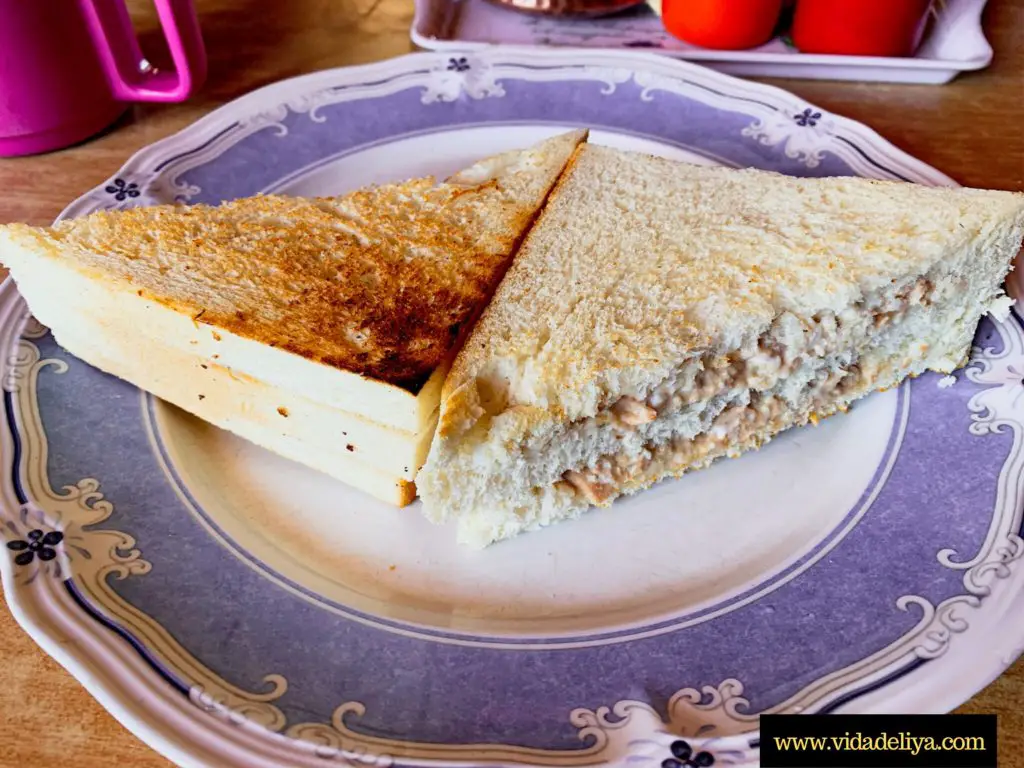
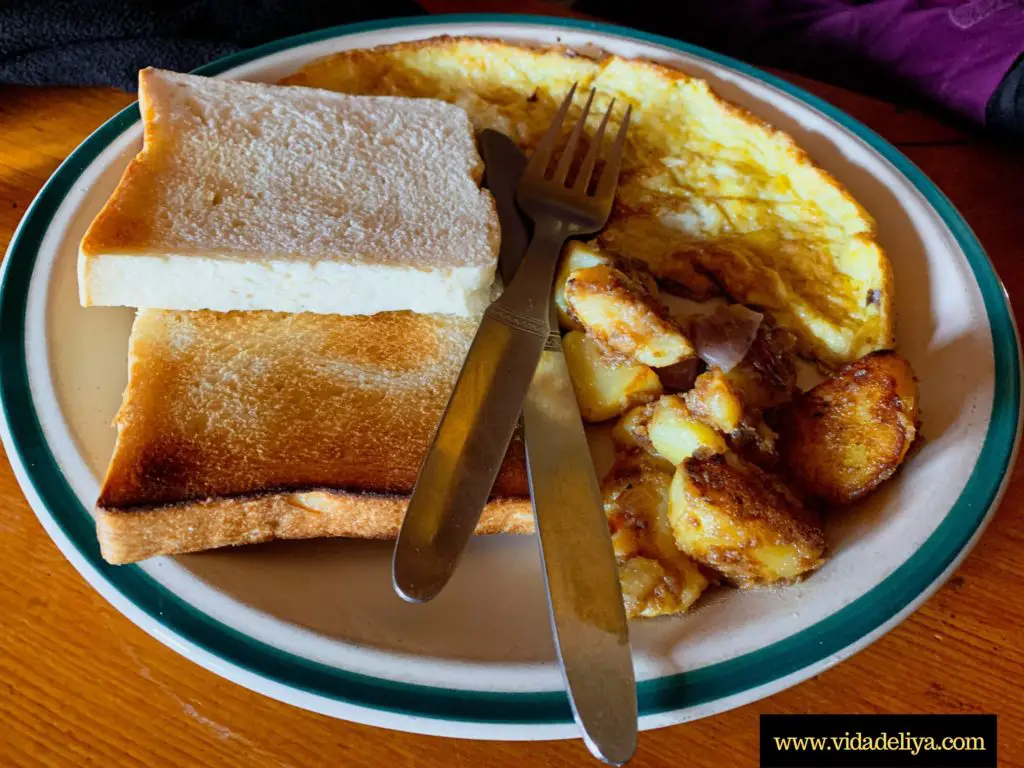
Bread is pretty common on the EBC trek.
Toast for instance came in other varieties:
- Plain toast
- Toasted bread with honey and jam
- Cheese toast
- Honey toast
- Jam toast
- Egg and cheese toast
Then there are the sandwiches (that came with chips!):
- Vegetable cheese sandwich
- Tuna sandwich – so delicious!!
- Cheese tomato sandwich
Pancake
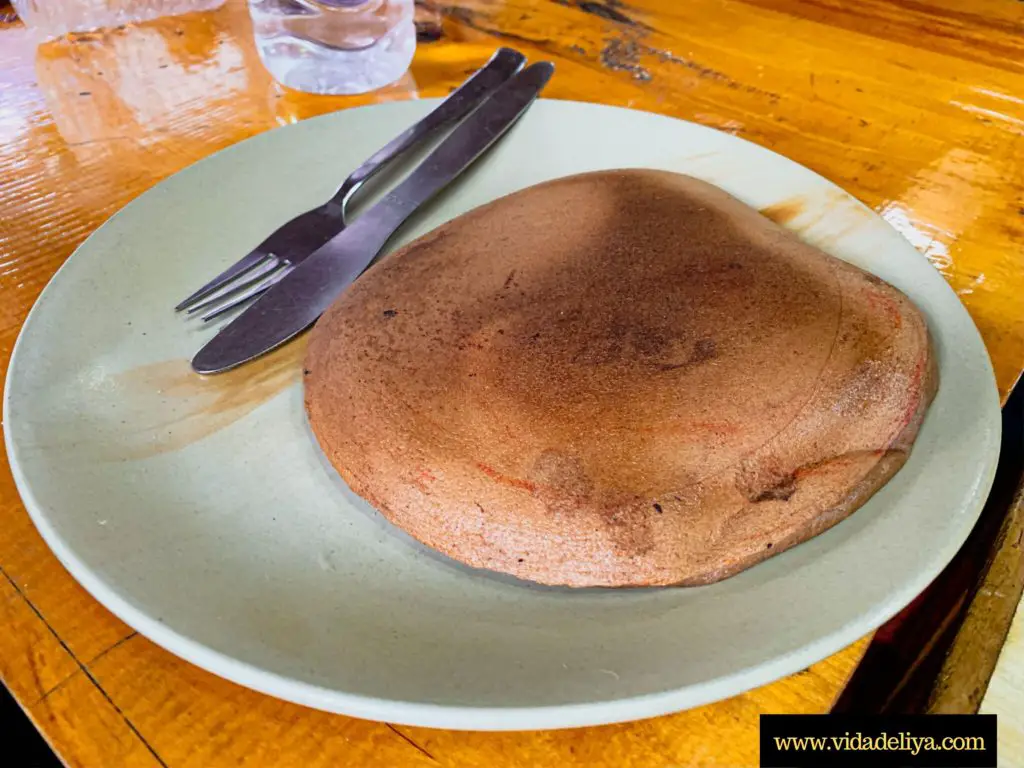
Pancakes also came in many variations:
- Plain pancakes
- Chocolate pancakes
- Apple pancakes
- Egg pancakes
- Lemon pancakes
- Cinnamon pancakes
- Plain chapati
- Chapati with honey, eggs, peanut butter or baked beans
Pancakes are pretty decent and some of my friends ordered it repeatedly for breakfast!
Porridge
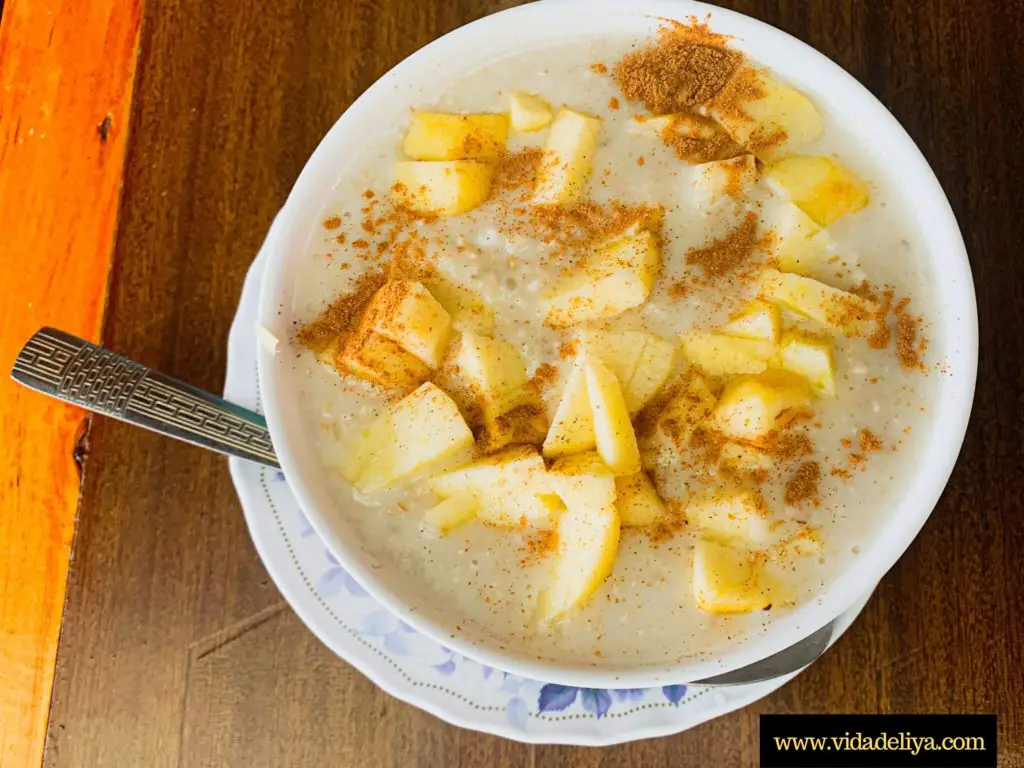
Porridge was such a lifesaver for me at higher altitudes when I completely lost my appetite. They were also really, really tasty.
Porridge options we saw included
- Oatmeal porridge
- Apple porridge
- Honey porridge
- Tsampa porridge
- Porridge with raisins and cinnamon
- Rice pudding
- Chocolate pudding
- Muesli or cornflakes with hot milk
Porridge is actually served for all meals so you can also have it for dinner. And add honey in it!
Honey & Jam
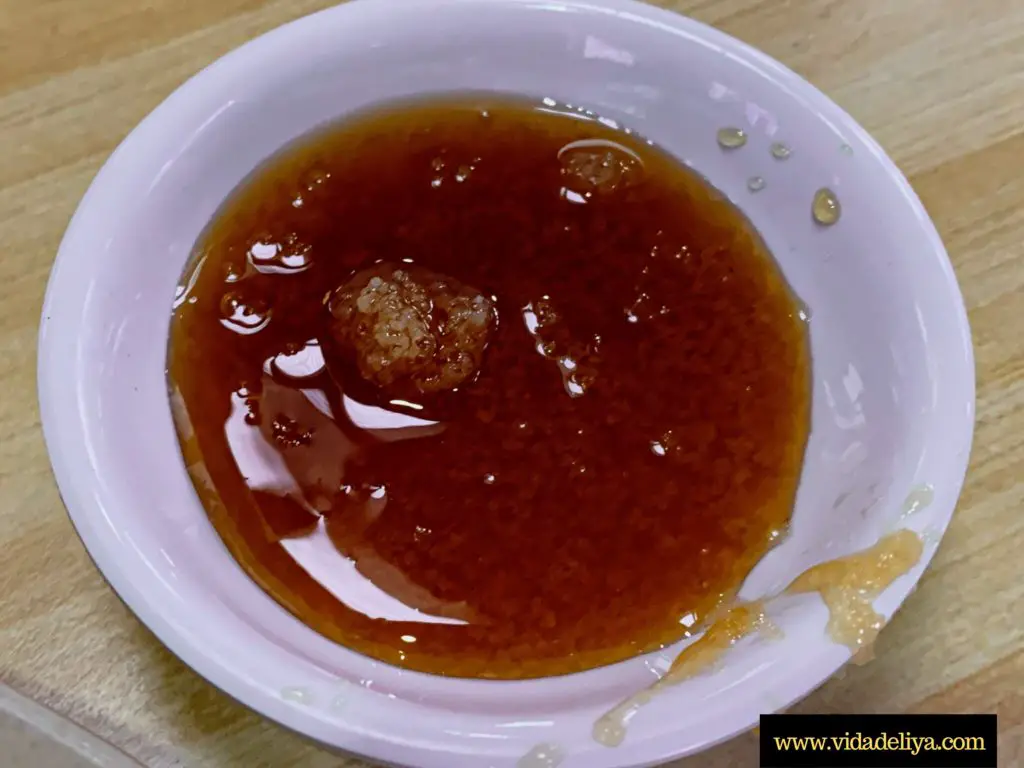
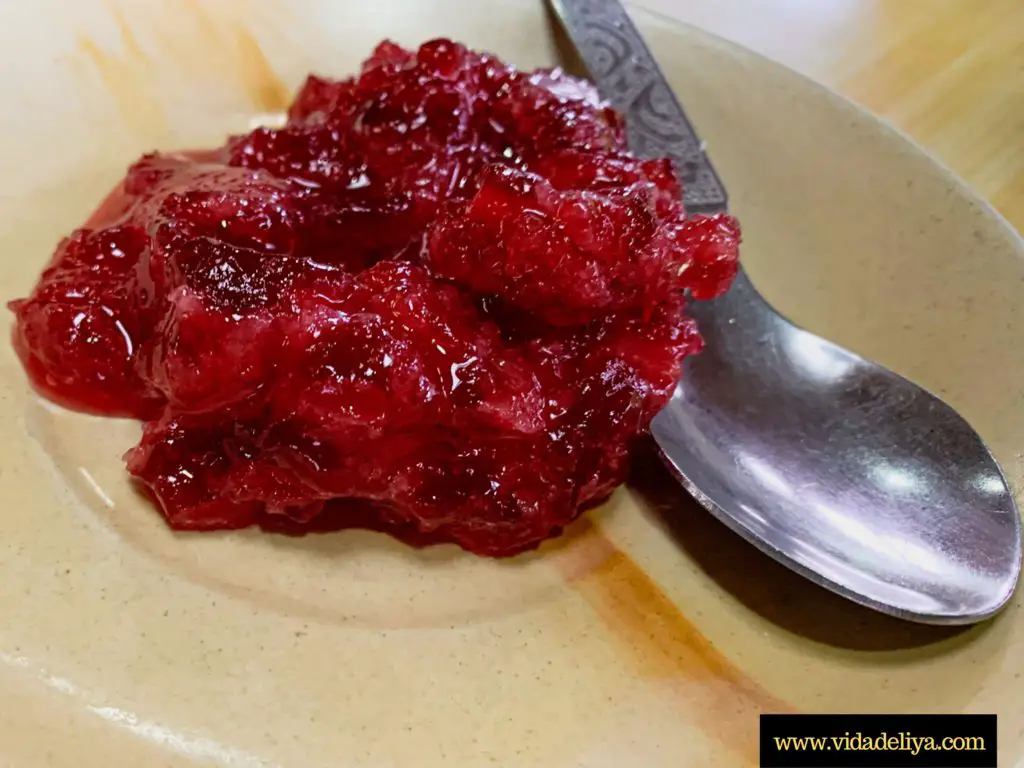
I feel like the honey and jam served on the Everest trek deserves a category of its own. They were so good.
The honey was rich and delicious and the jam was so fresh. It was like they’d just taken the fruits and made them into jam. Highly recommend having them with the bread or even porridge!
Lunch/Dinner
Depending on the trekking schedule for the day, lunch tended to be around 11 am to 1 pm. When we arrived at our lunch destination, orders would be placed and served the moment it was ready. This never took very long.
Dinners tended to be around 6 pm and that was because we always had an early night. We would eat at 6 pm, warm up in front of the stove until around 8-9 pm before heading straight for bed.
Dal Bhat (or “Nepali Khana Set”)
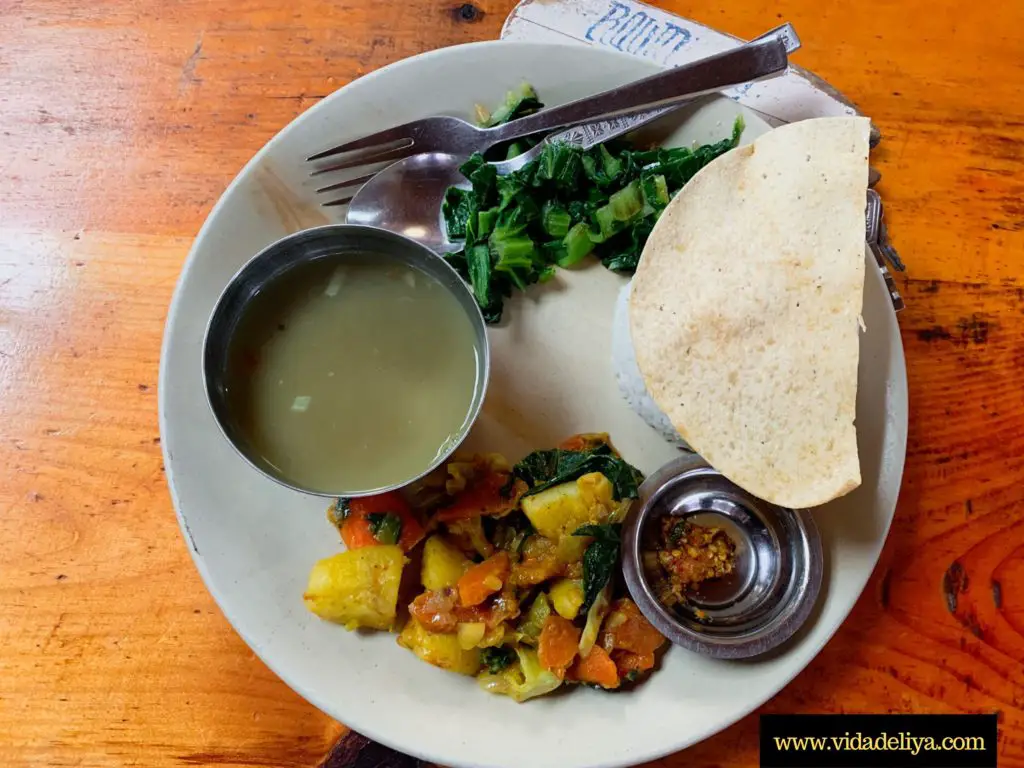
You can’t talk about food on the Everest Base Camp Trek without talking about dal bhat.
Dal bhat is kind of like economy rice. It is a mixture of rice with vegetarian sides that can include potatoes, lentil soup and/or vegetable curry. The exact side dishes differ depending on which tea house you are in.
The lentil soup has spinach, ginger, garlic and a bit of chilli in it. It’s not actually spicy either!
Dal = Lentil Soup
Bhat = Boiled Rice
Achar = pickles (condiments)
Tarkari = vegetables
Two options available when it comes to the “Khana set” (khana means “meal” in Indian”)
- Dalbhat (Nepali khana set); or
- Non veg khana set
So why is dal bhat such a staple trekking food and why should you eat dal bhat?
- It’s very filling – with rice and possibly potatoes too, you have your carbs, carbs, carbs. Which is all you need on the EBC trek because you’re using so much energy every day.
- There are endless refills. Order dal bhat and you will never go hungry. You can eat as much of whatever particular type of dish you want whether it’s the rice, potatoes or fried vegetables. Just raise your hand and tell them and they will bring it to you.
- It’s safe because dal bhat has a vegetarian option. Remember the warning about not eating meat while hiking to the Everest Base Camp? Ordering dal bhat is a safe choice. Always.
- It’s piping hot! And trust me, it gets so cold on the mountains especially at night where it plunged to -20C for us. Nothing beats a warm meal at night, or even for lunch!
- It’s always good.
- You can get dal bhat everywhere. No matter where you are on the Himalayan mountains, you can be sure that dal bhat is on the tea house menu.
- The locals love it. Our guide and porters ate dal bhat almost all all the time and I for one would follow a local’s recommendation any time. They know what works and what’s good!
Fried Rice
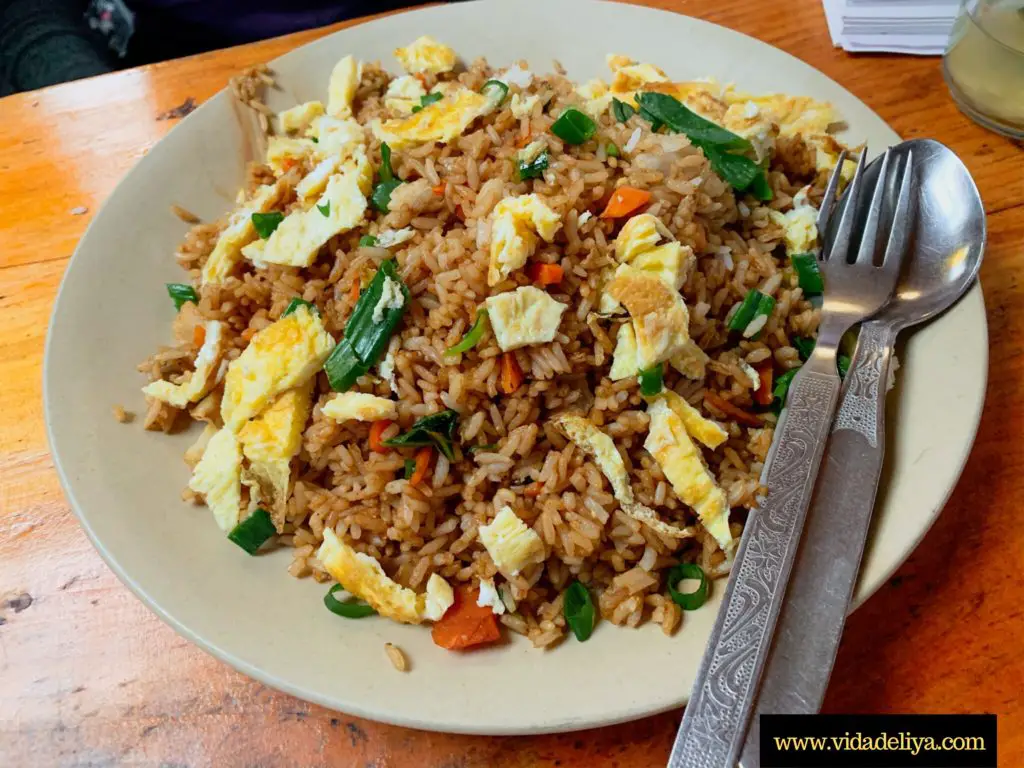
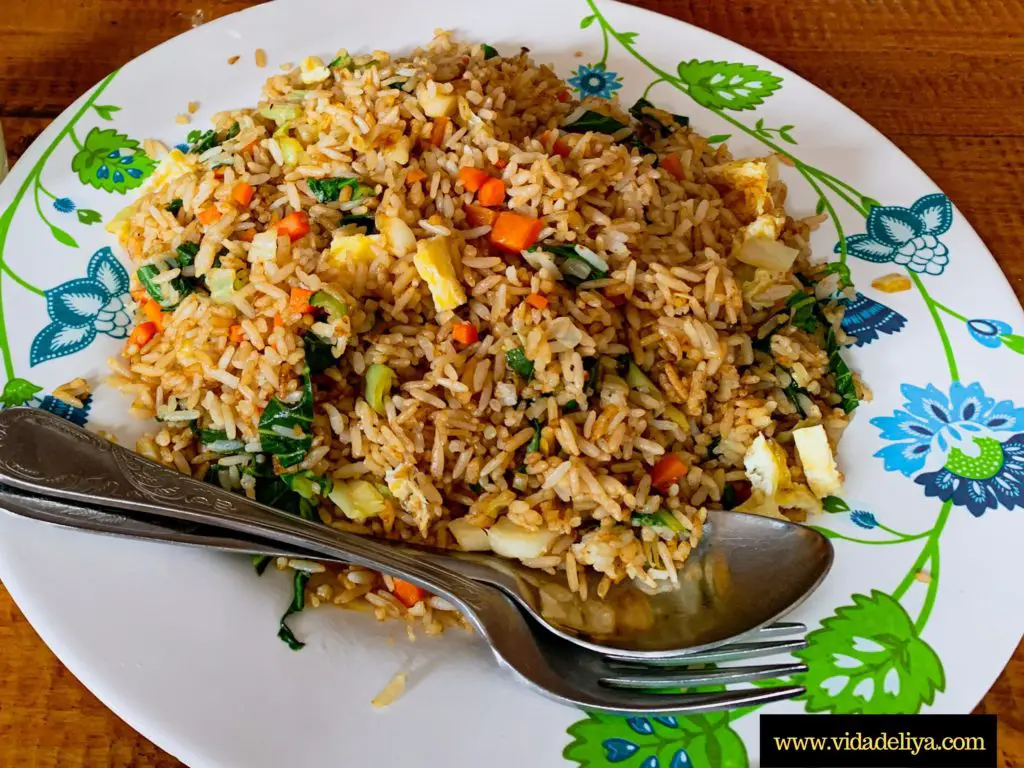
Fried rice is a very popular dish. Easy to eat and rich in carbohydrates, which is all you need.
Rice options include:
- Plain rice
- Vegetarian fried rice – the safest, most popular option
- Egg fried rice
- Chicken fried rice
- Cheese fried rice
- Tuna fried rice
- Mixed fried rice
- Fried rice with chicken or vegetarian curry
When we had full day hikes, my entire team would have vegetarian fried rice. It was the easiest and fastest thing to get and again, chock full of carbohydrates. Can’t go wrong with that!
Curry Rice
Curry rice was fairly common on the EBC trek too and included:
- Veg curry with rice
- Chicken curry with rice
Fried Noodles (Chow Mein)
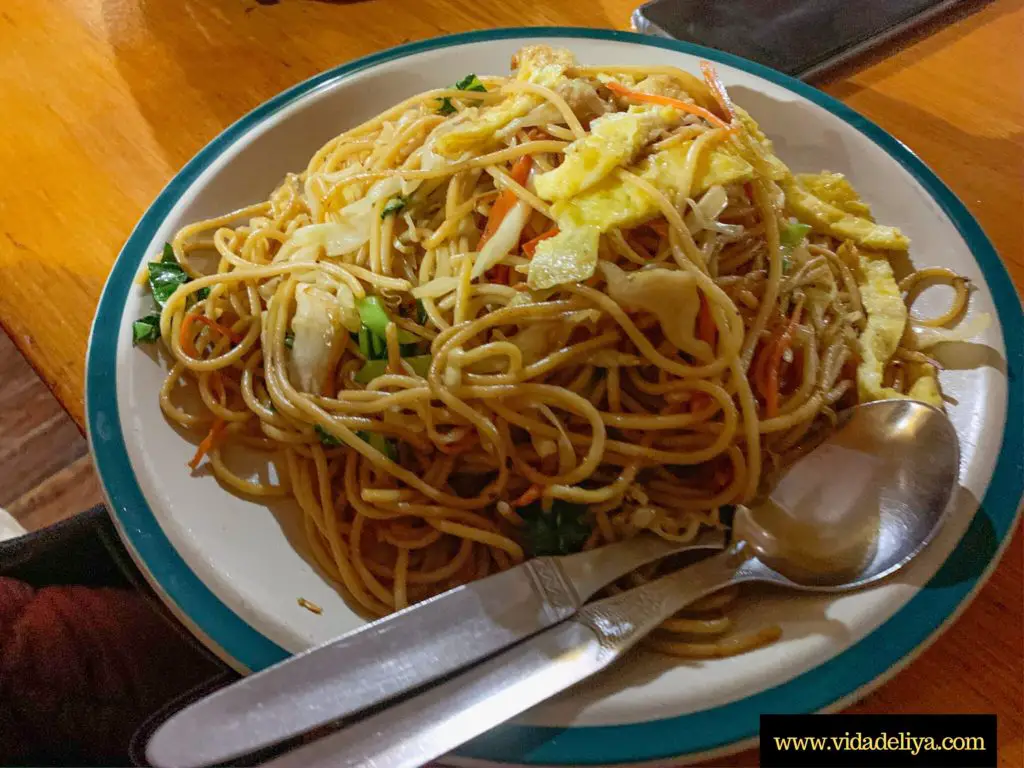
If you’re sick of fried rice, then you can opt for fried noodles instead.
Fried noodle options include:
- Vegetarian fried noodles
- Egg fried noodles
- Cheese fried noodles
- Mixed fried noodles
Again, pretty decent. There is nothing special about fried noodles as it’s meant to give you the fuel you need for hiking.
Eggs
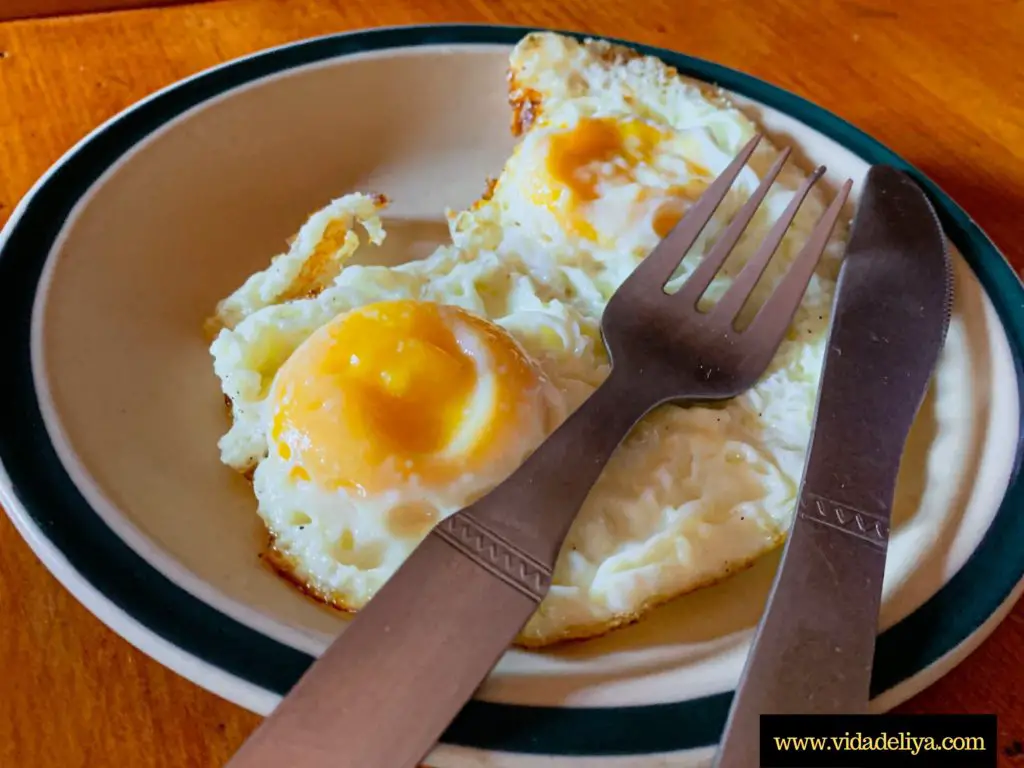
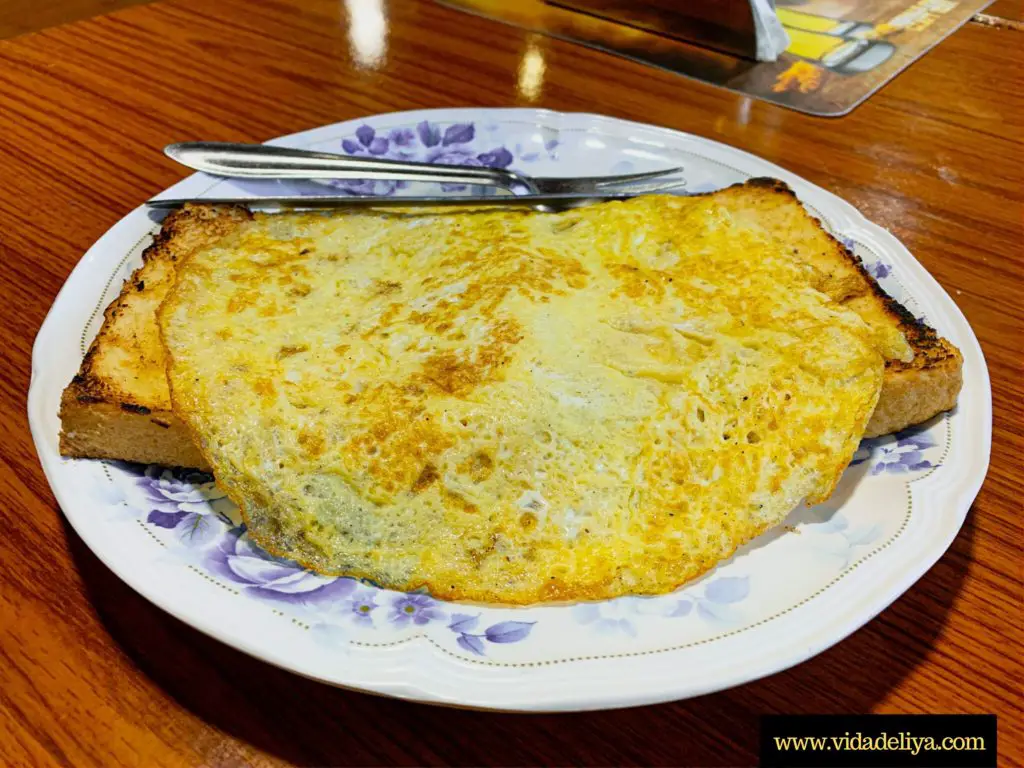
The tea houses offer so many egg options you won’t even believe!
Eggs are also available for breakfast or as accompaniments to other dishes and include:
- Fried eggs
- Boiled eggs
- Scrambled eggs
- Plain omelettes
- Cheese omelettes
- Onion omelettes
- Vegetable omelettes
- Tomato and cheese omelettes
Fried eggs are a pretty popular choice for hikers, if that’s your thing!
Pizza
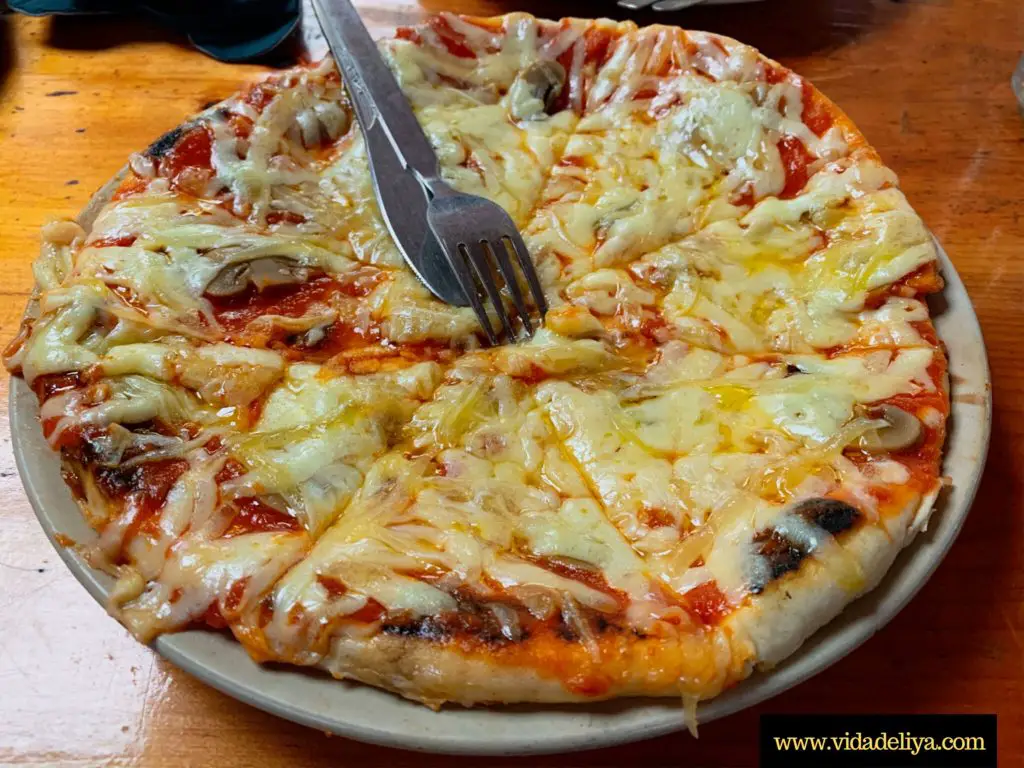
I loved the pizzas served in the tea houses!!
The crust is soft, almost like naan but less oily, but it’s delicious. And huge and mostly comes with yak cheese toppings.
You really can’t go wrong with ordering pizzas for any meal; I did at many tea houses and they were always amazing.
Admittedly, I stopped after Dingboche because I lost my appetite completely and just couldn’t stomach anything beyond porridge.
Pizza options include:
- Vegetable pizza
- Cheese and tomato pizza – essentially margherita pizza. So good
- Mushroom pizza – genuinely really good
- Tuna pizza or tuna, cheese & tomato pizza – I had tuna in a number of different dishes and they were alright. If I were to choose, I’d go for the mushroom toppings. The way that the tea houses referred to certain dishes differed slightly, e.g. tuna dish was obviously no different ahn “tuna, cheese and tomato pizza”
- Chicken pizza – didn’t try because this is meat and the last time I saw live chickens was in Namche Bazaar on Day 2. Even then I’m not sure if they slaughter those mountain chickens for eating!
- Mixed pizza
Pasta/Spaghetti/Macaroni
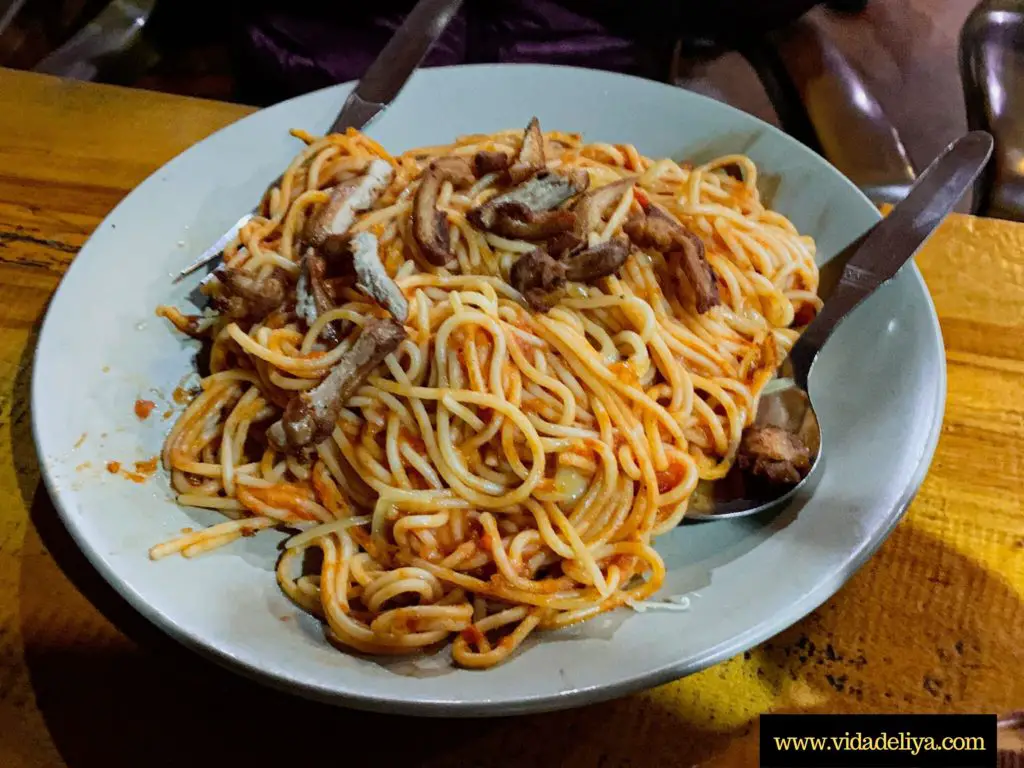
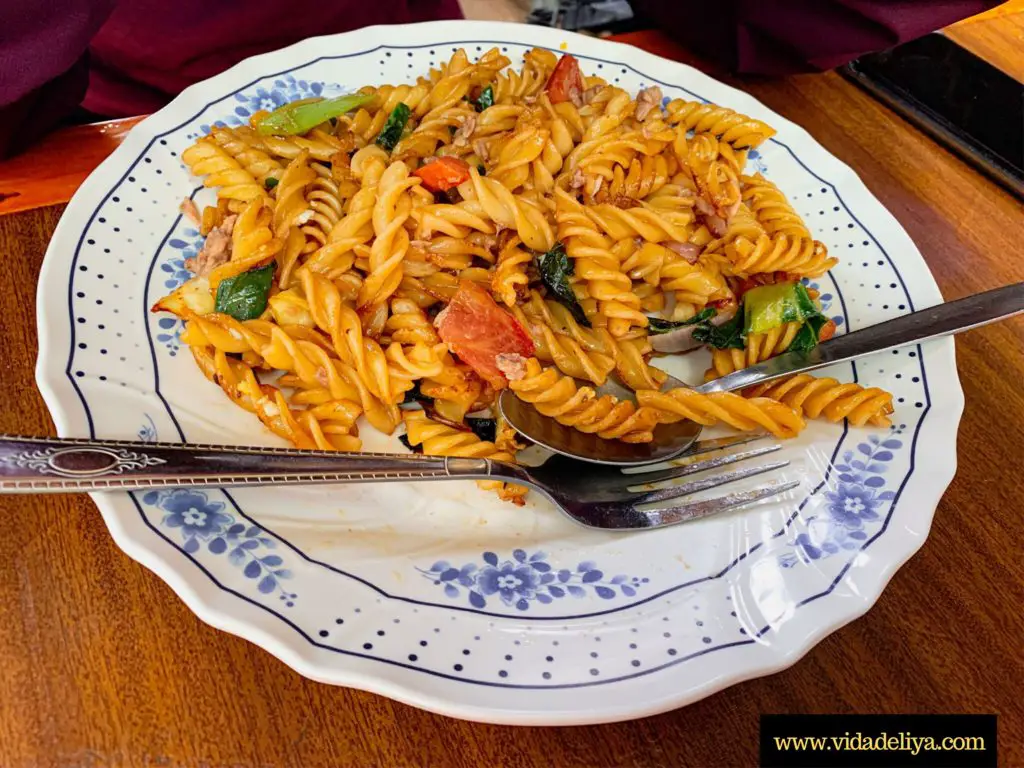
Pasta and macaroni were available at every Himalayan lodge we stopped at but for some reason, pasta and macaroni were also split into two different sections in the menu.
Macaroni dishes we saw:
- Vegetable fried macaroni with cheese
- Macaroni with vegetable and egg
- Macaroni with cheese and tomato sauce
Pasta dishes we saw included:
- Tomato and cheese pasta
- Fried vegetarian pasta
- Fried cheese pasta
- Spaghetti with cheese and tomato
- Spaghetti with chicken and tomato
- Spaghetti with tuna, cheese and tomato sauce
- Plain macaroni
- Macaroni with cheese, egg and/or vegetables
- Spaghetti bolognese – Good Luck Hotel in Dingboche served pretty decent spaghetti bolognese along I personally found the spaghetti to have still been cooked for a little too long
Now, I love pasta. But pasta/macaroni was the one dish I abhorred on the mountains. Tried it at three different Himalayan lodges and I hated all of them.
I found that the locals like to overcook the pasta/spaghetti – it’s too soft; definitely not al dente. The tomato sauce also tasted rather weird; like ketchup.
That said, I have come across many other EBC trek blog posts that swear by how amazing the pasta dishes were so I won’t completely write them off.
You might get lucky and end up in tea houses that cook amazing pasta! Or just prefer them soggy.
Potatoes
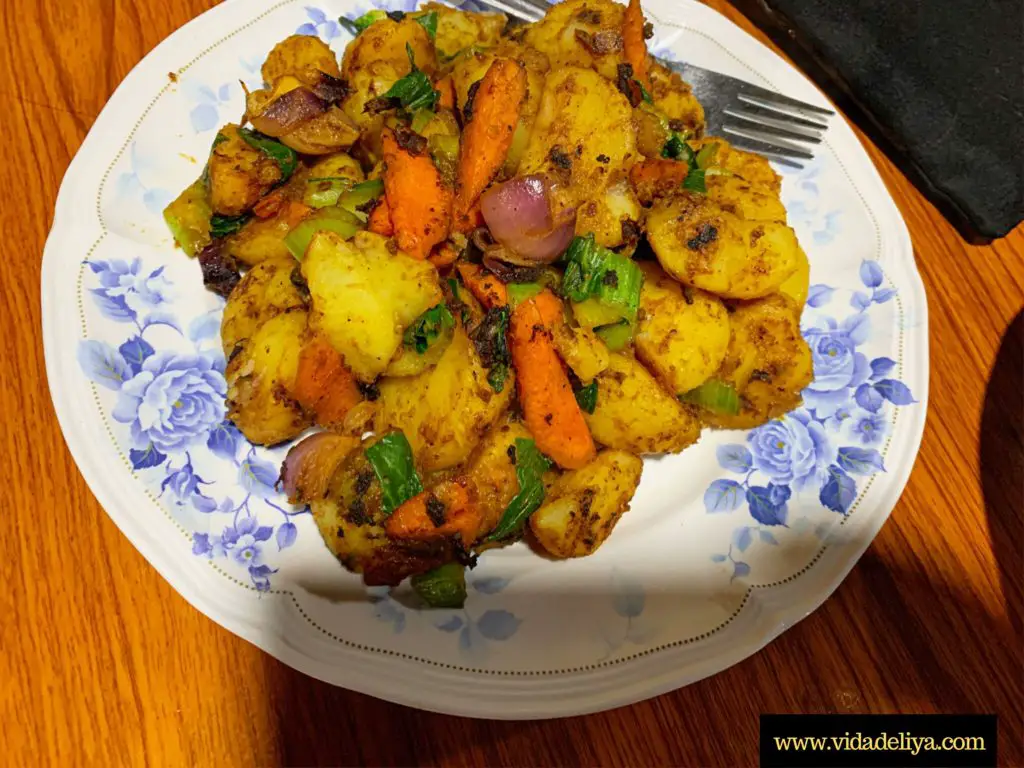
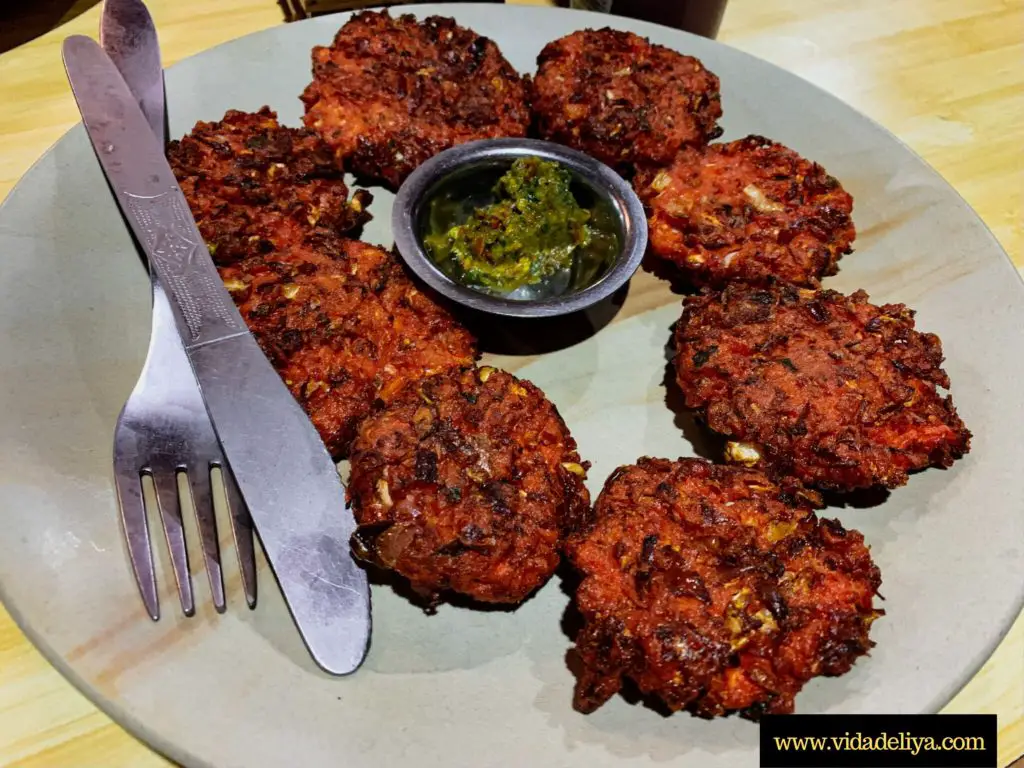
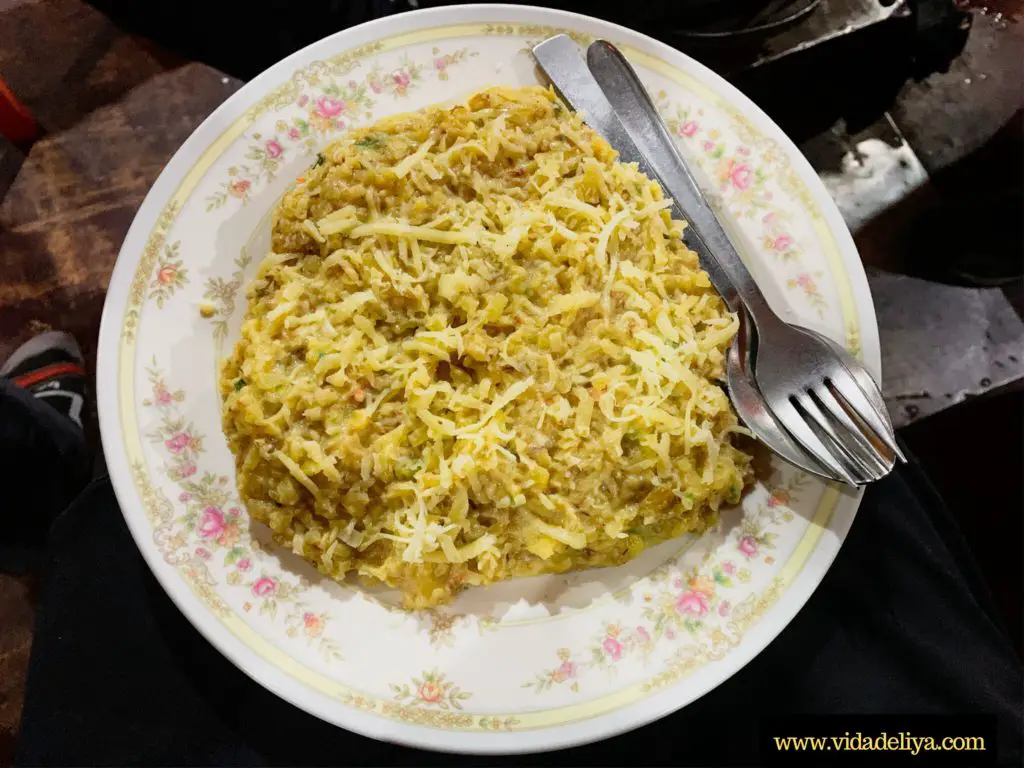
So many, many options when it comes to potatoes, depending on the tea house.
We saw food options like:
- Mashed potato
- Boiled potato (only)
- French fries
- Fried potato with vegetables
- Fried potato with fried eggs – fried eggs are really popular on the mountain. My mind boggles at the thought of how the porters lugged all those eggs up the steep mountains for days without breaking them?!!
- Fried potato with cheese – most likely yak cheese. They have lots of those on the mountains
- Fried potatoes with some variation/combination of the above
- Potatoes in momo
- Swiss Rosti with egg
Potatoes are a staple. If you like them, go for this!
Momo (Nepali Dumplings)
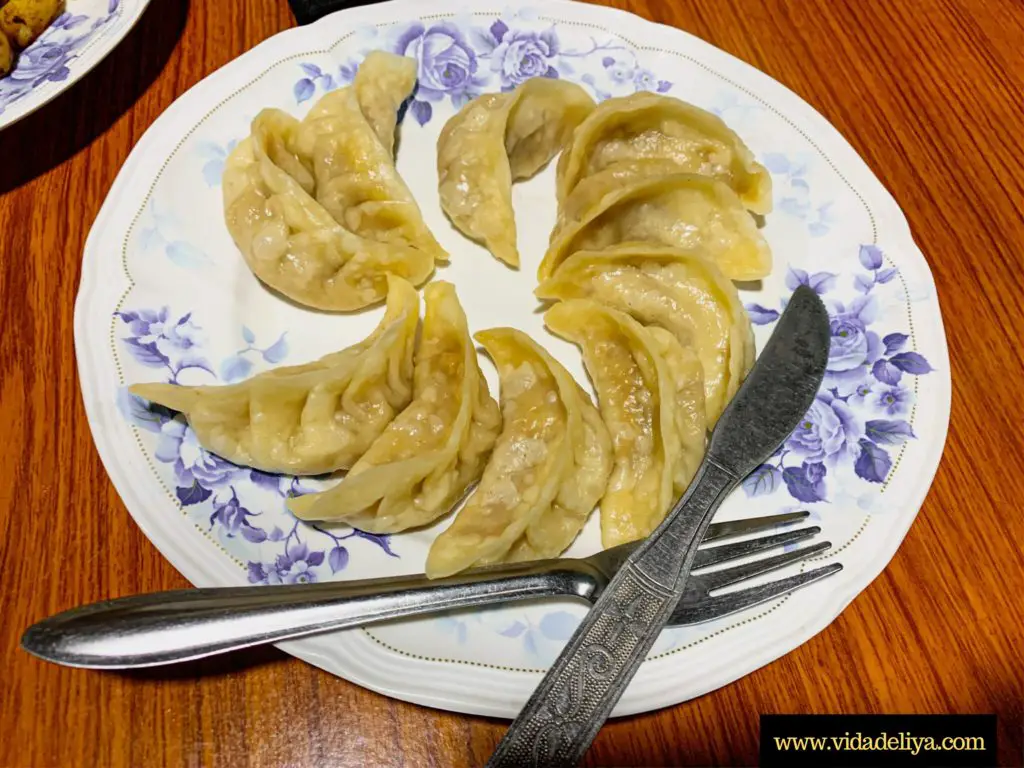
Momo is the local Nepali version of dumplings.
They can be steamed or fried and have all kinds of ingredients inside including:
- Potato
- Cheese
- Meat like chicken
- Vegetarian
I think you can see the trend in terms of food you get on the EBC trek!
Honestly if you’ve had Chinese dumplings before, momo isn’t going to taste any different. Momo really is just dumplings!
Fried Chips with Eggs
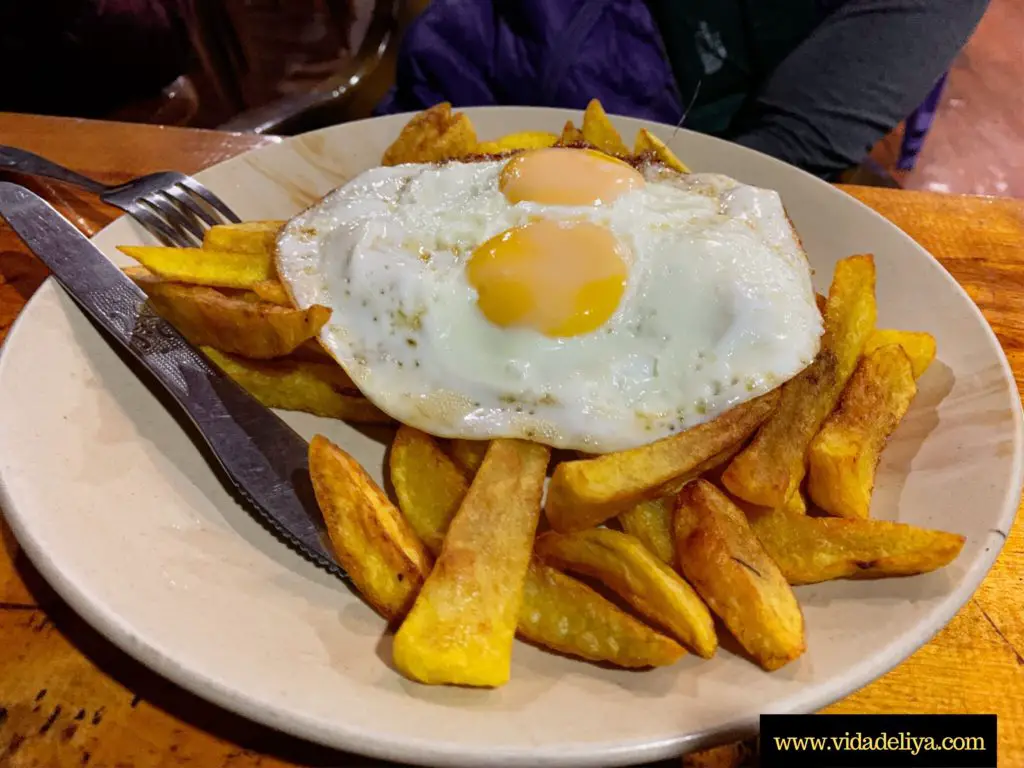
This was quite a popular dish with my group.
It tasted exactly like fried chips and fries eggs in other places. Some loved it and had it multiple times on the trek. I personally didn’t like it because I found it incredibly oily.
To each their own!
Burgers
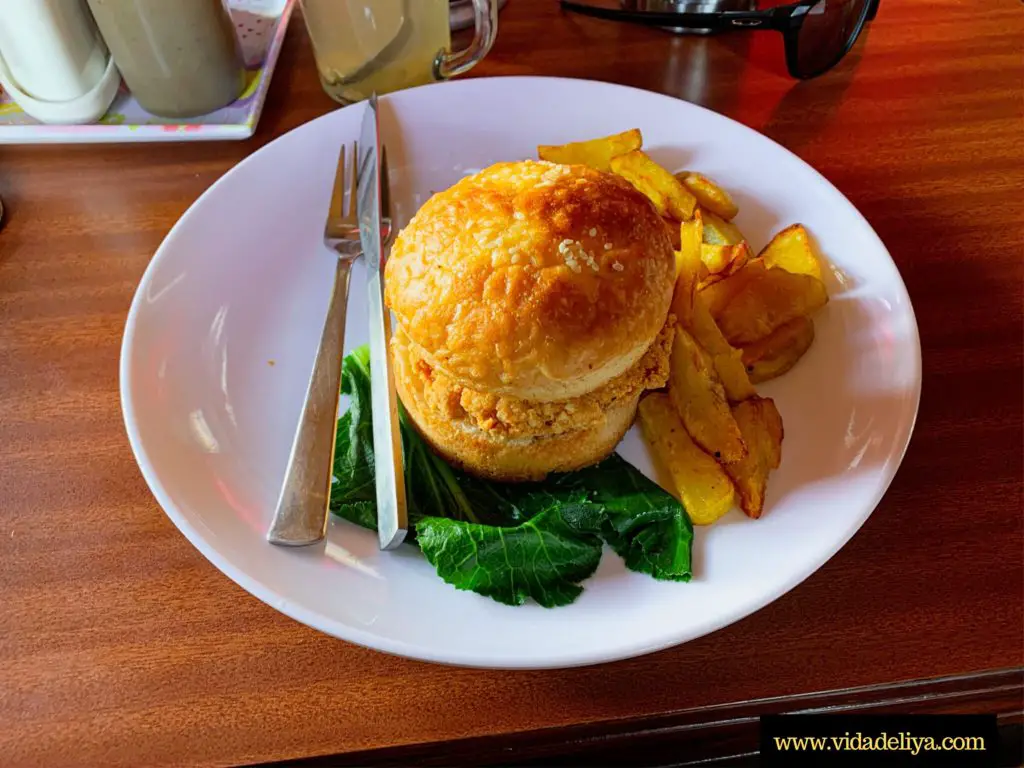
Yup, you get real burgers on the mountains!
Although I have to say that I wasn’t personally too keen on it as the bread was too dry. But it could also be because we were at high altitudes and I’d already lost my appetite.
Other trekkers seemed to enjoy the burger.
Yak Steak with Chips
I’m going to be very honest: I didn’t try this, for reasons detailed above.
I’ve heard many stories of people trying and surviving the experience and others who tried and ended up suffering greatly.
It’s a risk you take. My advice: if you really want to try yak meat (I still kinda of do myself, actually), try it only on the way down in a place like Namche Bazaar.
Don’t try it on your ascent to Everest Base Camp.
Spring Rolls
Honestly not the best. Small and extremely oily; didn’t taste all that great. But you never know; maybe the tea house you end up in serves great spring rolls.
Our personal experience wasn’t that great.
Sherpa Stew
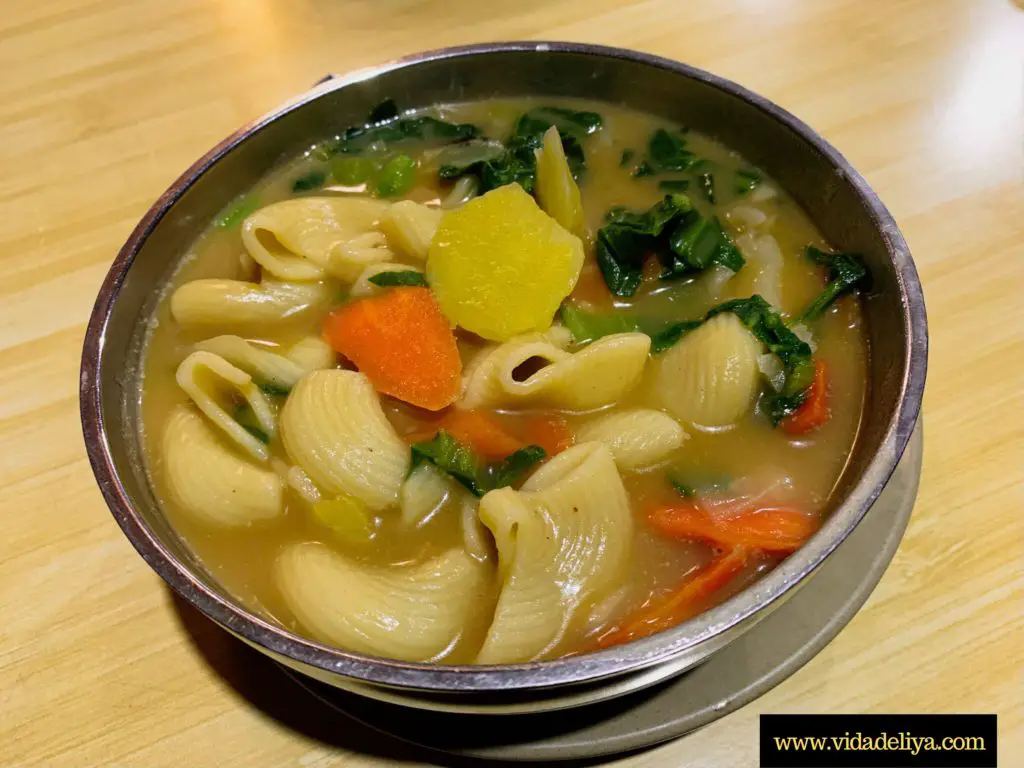
Sherpa Stew was another local Himalayan dish I really wanted to try on the EBC trek.
It is essentially a vegetable stew with thin noodles (or macaroni!), beans and carrots. The exact ingredients differ depending on which tea house you happen to be in. But it’s something that Sherpas take a lot.
Personally, I didn’t like it. I didn’t find it all that tasty but it is certainly hot and filling. To each their own!
Garlic Soup
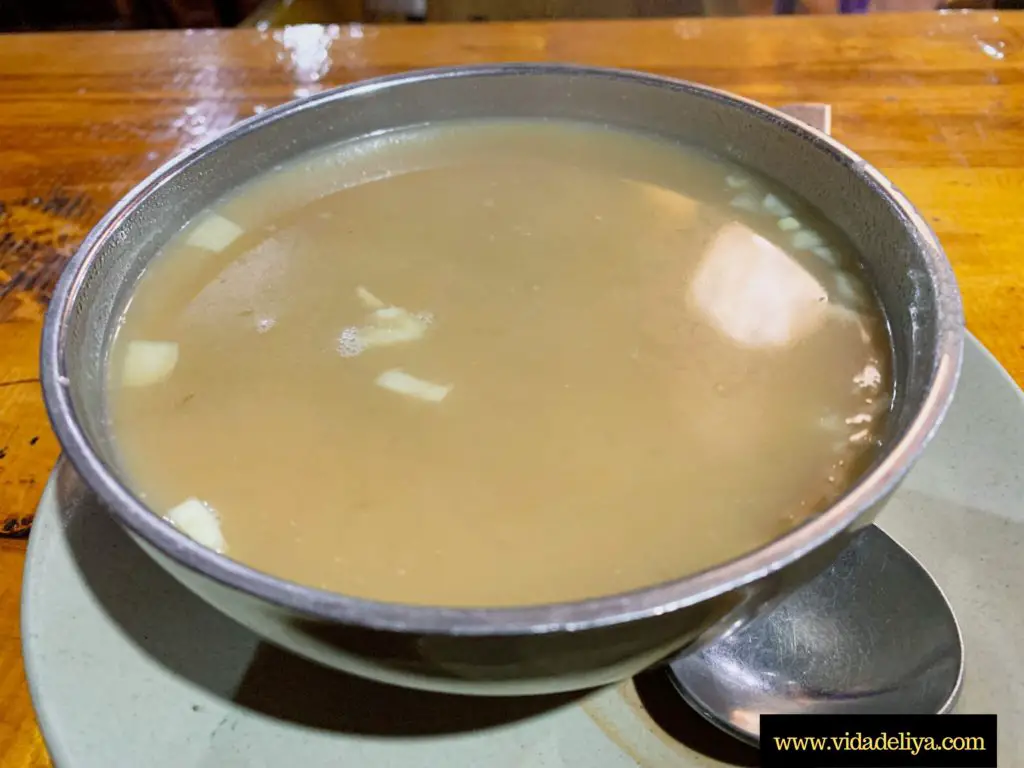
A lot of hikers swear by garlic soup. Garlic is one of the most common food items consumed to battle AMS (acute mountain sickness) and garlic soup is extremely popular.
Personally, I wasn’t too fond of garlic soup. It tasted too blend to me. But some love it, so give it a go!
Garlic soup was served at every tea house I stopped by so you won’t have trouble finding it on the menu.
Other Kinds of Soups
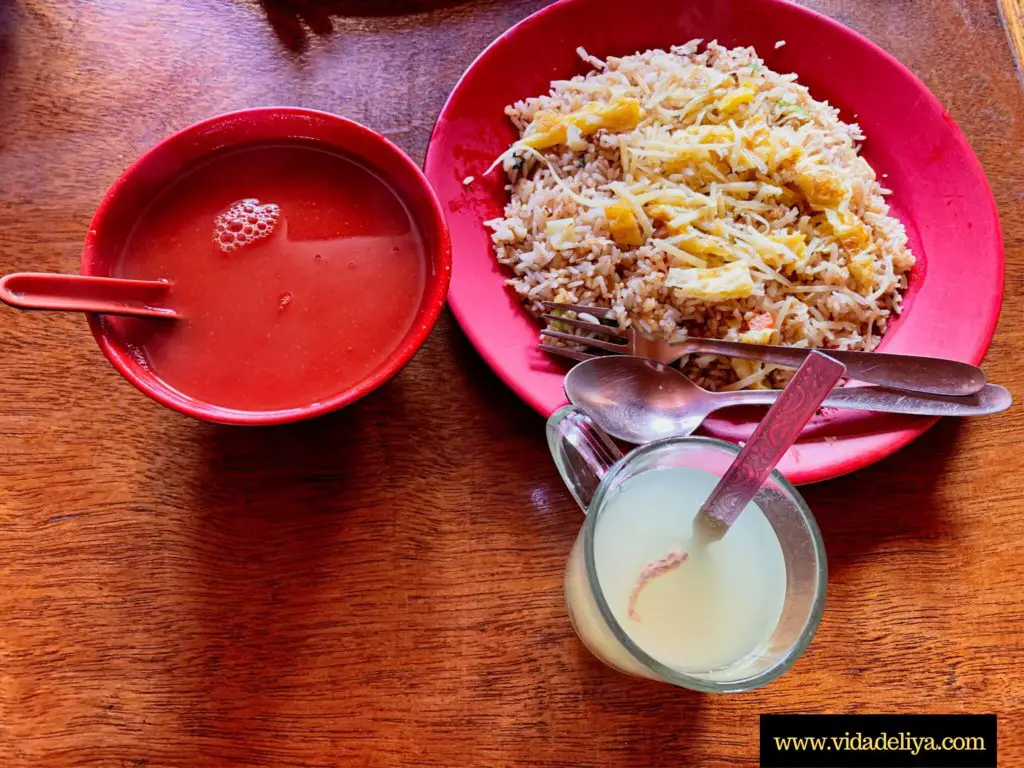
The Himalayan tea houses offered tons of soup options! Apart from Sherpa stew and garlic soup, they included:
- Vegetable noodle soup
- Vegetable soup
- Chicken soup
- Tomato soup
- Tomato egg soup
- Dal soup
- Mushroom soup
Dessert
Apple Pie
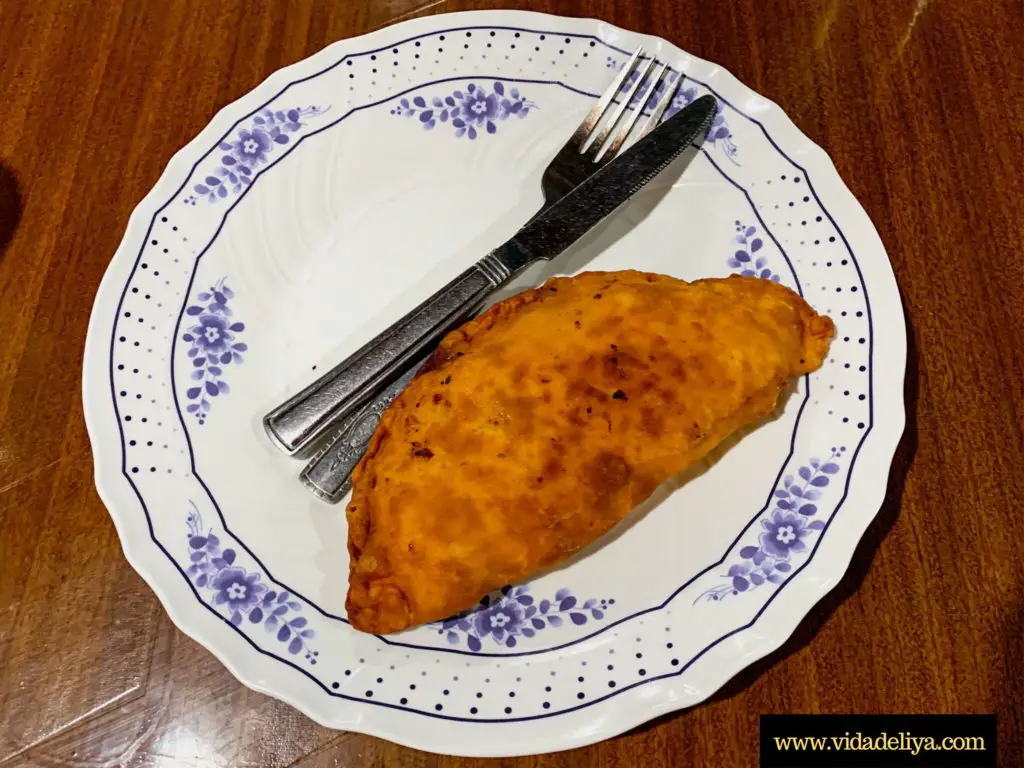
Apple pie was a surprisingly common feature up in the Himalayan mountains.
Some Himalayan tea houses even sold apple pie with custard!
The apple pies are a hit and miss, depending on where you order it. The one we had in Kyangjuma was pretty decent but not quite so in other tea houses.
Fried Mars Bars
Fried Mars bars are essentially Mars bars wrapped in a fried batter. It’s also called a “Mars roll” and is as decadent as it sounds!!
I saw it but never got around to trying it, to my deepest regret. If you have the stomach for it, try it! I hear it’s amazing.
French Bakeries
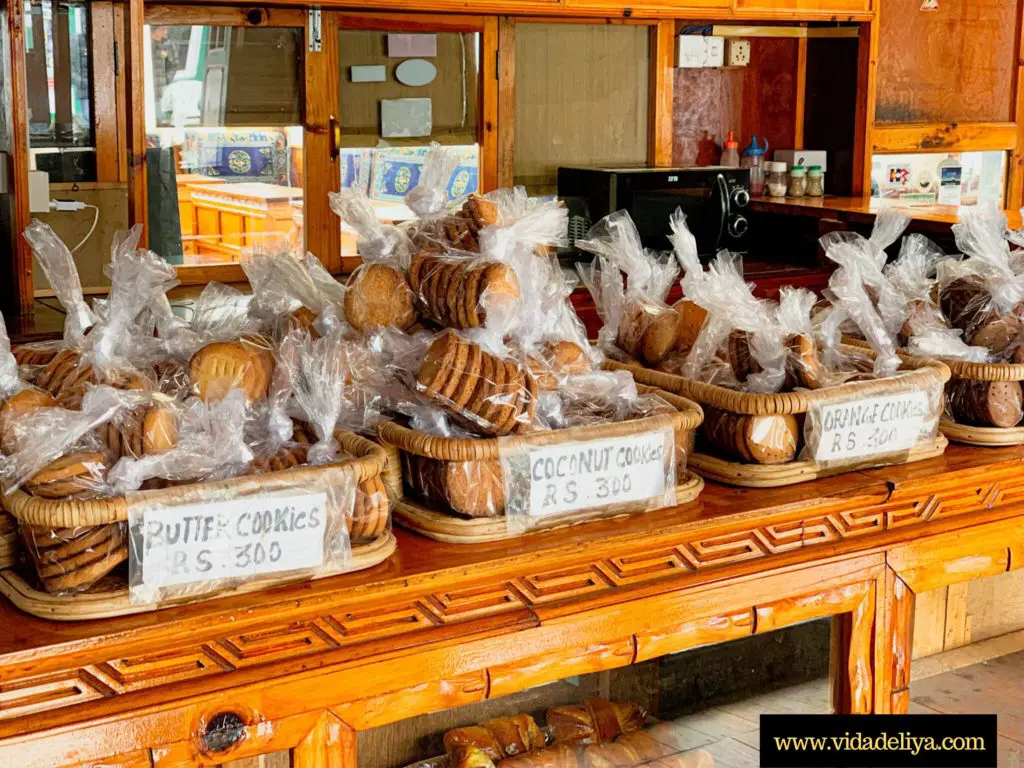
We saw french bakeries as high up as in Dingboche, I kid you not. But we stayed at Good Luck hotel, which wasn’t exactly in the Himalayan village of Dingboche itself.
Instead, we were situated on the mountain slopes and the thought of hiking down then all the way upwards again was too much.
As such, we didn’t get to try Dingboche’s french bakery (located on the left side almost immediately after you enter the main entrance to Dingboche.
That said, there are bakeries everywhere in the Himalayan mountains.
In Namche Bazaar, there is a famous German bakery known for its apple pie and chocolate cake. Sadly we didn’t get to try it as it was too cold and miserable; it probably wasn’t even open yet as Namche Bazaar was a desolate landscape with hardly any hikers thanks to COVID-19!
We also saw a bakery in Thukla, but that bakery wasn’t open.
So bakeries are certainly an option even when you trek to higher altitudes. But whether the bakeries are open for business and/or quality of baked goods is another story altogether.
Drinks
Drinks tend to be served (with different price ranges) as:
- Cup
- Small pot
- Medium pot – this is for a 1 litre drink
- Large pot
Water
Water is going to be your best and worst friend.
Forget about alcohol and all those jazzy things, you need water. Estimate around 1.5 litres per 3 hour hike, at the very least.
Water is critical in staving off or minimising the impact of altitude sickness.
Drink even when you don’t feel thirsty because the mountain air is very dry. You will be dehydrated without even realising you’re dehydrated and when the altitude sickness slams in because of your dehydration, it will be too late.
You can buy chlorine filtration pills and filter the water or purchase mineral water. I know people are wary of purchasing mineral water but honestly, that was what I relied on the entire trek and had no issues.
Water gets more expensive the higher in altitude you go.
Again, because all the water you get up there was carried on the back of human porters so the cost includes the insane amount of human labour involved.
A cost estimate for 1 litre of water goes like this:
- Lukla, Phakding & Namche: NPR 100
- Kyangjuma: NPR 150
- Deboche & Dingboche: NPR 250
I’m going to be honest. I didn’t get mineral water higher up after Dingboche because it was so cold. The leftover water I had in my bottles turned to ice overnight.
What I did instead was to pour my hot water into those existing Salomon soft flasks to get my water for the day. Those hot water flasks turned freezing cold within the first hour of our hike in any event ☹️
Hot Water
Hot water is always more expensive than plain old mineral water but is an absolute lifesaver higher up in the mountains. That was the only type of water I purchased in Thukla, Lobuche and Gorak Shep.
Estimated costs for 1 litre of hot water (it comes in a giant flask) on the EBC trek:
- Thukla: NPR 350
- Lobuche: NPR 450
- Gorak Shep: NPR 400 (yes weirdly enough, it was cheaper in Gorak Shep then in Lobuche!! No idea why 🙊)
Hot Honey Lemon Ginger Tea
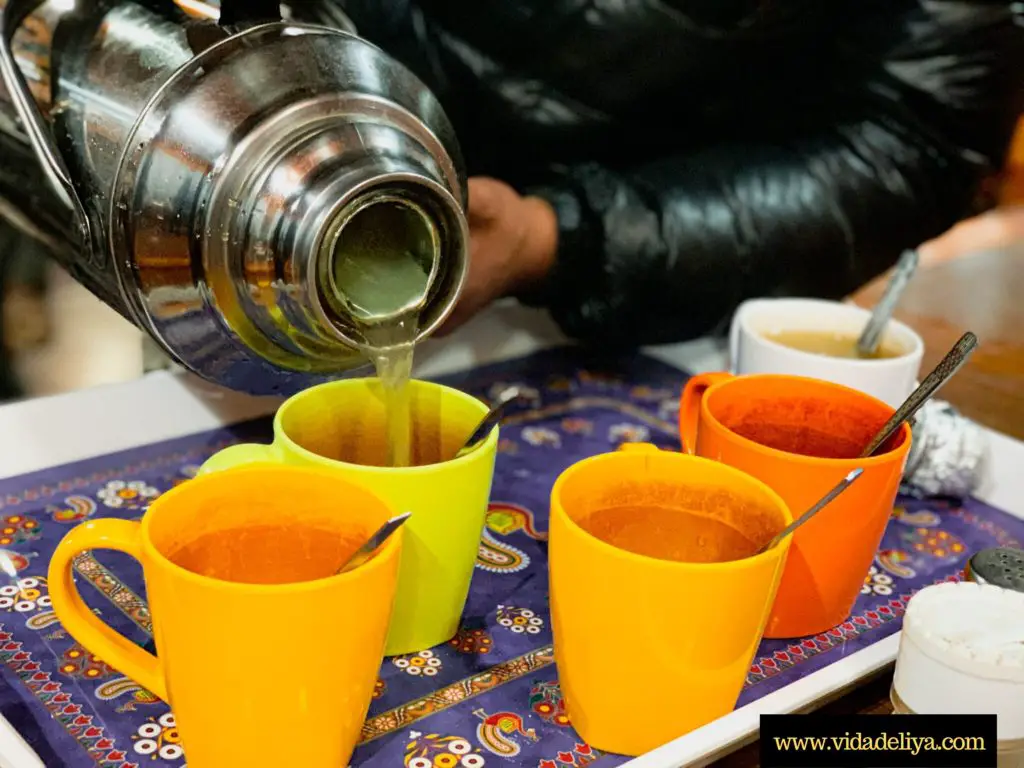
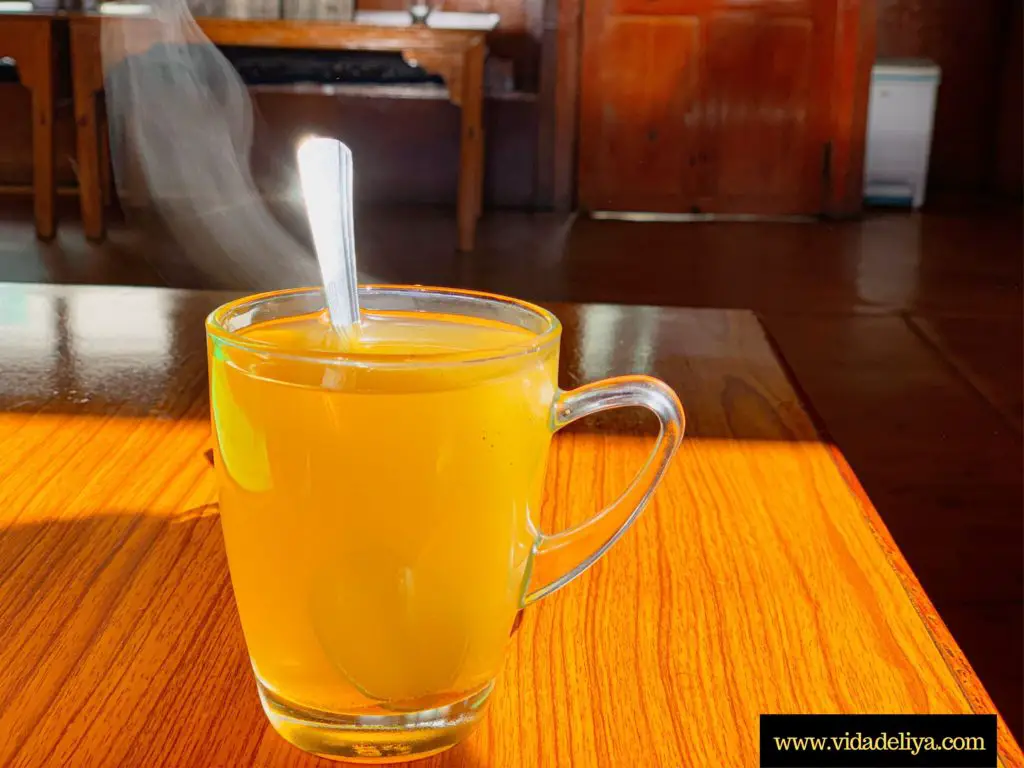
Drink hot honey lemon ginger tea no matter what, every time you’re in a tea house!!
My entire team ordered this for every lunch and dinner. The Nepali make the most delicious tea and hot honey lemon ginger tea known to be a good answer to staving off altitude sickness (better known as AMS).
If you want more honey, just tell the tea house owner and they will bring it to you.
Also, chew on the tiny ginger slices that come with the drink! Chewing ginger is meant to help combat AMS.
But I have to confess: after all that hot honey lemon ginger tea in the Himalayas, I got pretty sick of it. So I’m staying away from this drink for the foreseeable future 🙊
Sherpa Tea
I’d read about this before and never saw it/got around to trying, which I deeply regret.
So if you are feeling adventurous and see it on the menu, you might want to give it a go.
Sherpa Tea is essentially tea with cow’s milk, yak’s butter and salt! Apparently it’s really tasty and popular among Sherpas who drink it to replenish their magnesium levels.
Other Types of Tea
Other tea drinks available:
- Milk tea
- Black tea
- Lemon tea
- Mint tea
- Ginger tea
- Masala tea
Coffee & Alcohol
We saw many tea houses offering coffee and imported alcohol.
Unfortunately, you shouldn’t drink them when hiking up to EBC. It’s not good when battling AMS. But you can definitely give them a go on the way down!
Coffee types:
- Milk coffee
- Black coffee
Beer types we saw included:
- Tuborg
- San Miguel
- Everest
- Sherpa
Hard drinks
- Vodka
- Rum
- Red label
- Black label
- Local raksi
- Mustang coffee
- Wine
Other Drinks Available
- Hot chocolate – great in certain tea houses and not so great in others
- Hot orange
- Hot milk
FAQs
What would you recommend eating on the Everest trek?
Carbs.
Anything that gives you fuel is critical when on the Everest trek. In addition, I would recommend something that is easily digestible, nutritious, warm and helps to combat AMS (like ginger tea!).
The best bets when it comes to food would be:
- Dal bhat
- Fried rice or fried noodles
- Porridge
On a personal level, I would also throw in pizza and french toast though I’m aware that this isn’t everyone’s cup of tea.
Be more adventurous only on your descent from Everest Base Camp, or in the earliest days of your hike before there is any altitude sickness.
What kind of food and drinks should I avoid?
Popular recommendations are to avoid meat, cheese, alcohol, coffee and/or anything caffeinated. Smoking is also highly discouraged.
Will I get 3 meals a day?
Definitely!
Functioning tea houses will have an extensive menu that you can choose from and the dishes are normally prepared quite fast.
Just head into the tea houses, pick what you like, pay for it and sit down to wait. The dishes will be served to you.
What are the menus at the tea houses like?
The tea house menus are pretty similar to each other, particularly in terms of the ingredients used. The exact type of variation of dishes might differ.
However, you will definitely see popular dishes being featured like dal bhat, potatoes, pastas, pizzas and noodles.
What are the drinks available on the EBC trek?
You will definitely get water (boiled, bottled and even filtered water).
If you don’t want to drink boiled water from the stream, you can use water purification tablets – the water tastes like chlorine. Or use a Lifestraw, which is a handy life and money saver.
Alternatively, get bottled mineral water which I did the entire trip. I never had an issue and never needed a water purification tablet.
Will there be seafood on the EBC trek?
Seafood is not common on the EBC trek at all; in fact, I don’t believe I saw any being served! Certainly not fish.
This is because Nepal is a landlocked country these kinds of ingredients just aren’t easily available to the locals.
Will I lose weight when hiking to Everest Base Camp?
Big sigh here. Most of my friends said they lost at least 3kg, but I didn’t!! I’m not sure why. 🙁
How much is food on the Everest Base Camp trek?
Food costs an average of NPR 600 (USD 5 / EUR 4.50 / MYR 22) – NPR 1900 (USD 16 / EUR 15 / MYR 68) per dish, depending on what you order and where you order it (i.e. the higher in altitude, the more costly the dish).
If you budget around NPR 1500 (USD 12.30 EUR 11.5 / MYR 53.5) per meal, you will be very comfortable.
What food/snacks should I bring on the Everest Base Camp trek?
The Himalayan tea houses will take care of your main three meals of the day.
However, that doesn’t mean you want to eat just the food provided in those lodges.
So in that case, bring your instant noodles for variety.
Bring your sachets of drinks (e.g. milo and horlicks) to give a little variety to your drinks. And most importantly, do not forget your snacks!!!
The things you eat to boost your energy on the trek or just as a form of mental encouragement.
My recommendations on the type of snacks to bring are:
- Redoxon / Berocca / some form of energy drink
- Chocolate – please don’t bring a lot of the same kind of chocolate. I made that mistake and got sick of my Mars bars really quickly. I even brought most of them back with me to Malaysia!
- Trail snacks e.g. dried fruits or nuts
- Energy bars – a friend told me to bring this and I didn’t think I needed it. From experience, my advice is to bring some energy bars. The fatigue (and lack of oxygen!!) really kicks in closer to Everest Base Camp and I imagine that these energy bars will come in really helpful
- Tea bags / drink sachets (e.g. milo, horlicks, hot chocolate, whatever makes you happy!)
Conclusion
I hope you found this Everest Base Camp Food Guide helpful!
TL;DR
- Food is affordable but gets marginally more expensive the higher in altitude you go;
- Food is generally nourishing, tasty, warm & varied;
- Food offered tends to be the same at all Himalayan tea houses (despite the variety, you might get a little sick of it after awhile);
- When eating, make sure you get LOTS of carbohydrates. And drink hot honey lemon ginger tea. Most importantly, don’t forget to stay hydrated.
- Don’t drink any alcohol/coffee until you’re on the descent.
Any other questions I haven’t addressed in this Everest Base Camp food guide? Feel free to leave a comment below!
And if you’re debating whether to do the EBC trek, these are my 12 reasons why you should stop hesitating and just do it! 😉
Share this Post on the Ultimate Everest Base Camp Food Guide


You May Also Like
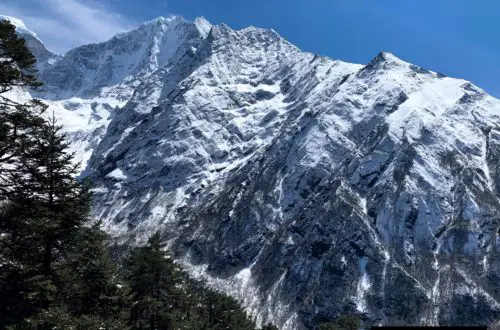
Top 12 Reasons You Should do the Everest Base Camp Trek
1st April 2020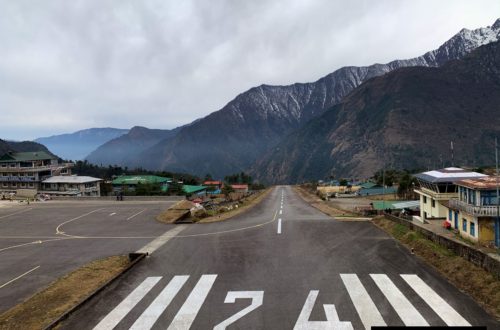
Stranded in Lukla during the COVID-19 Lockdown
28th April 2020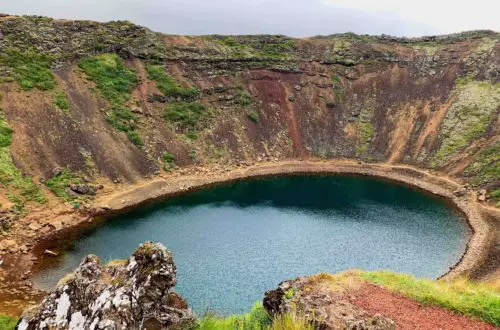
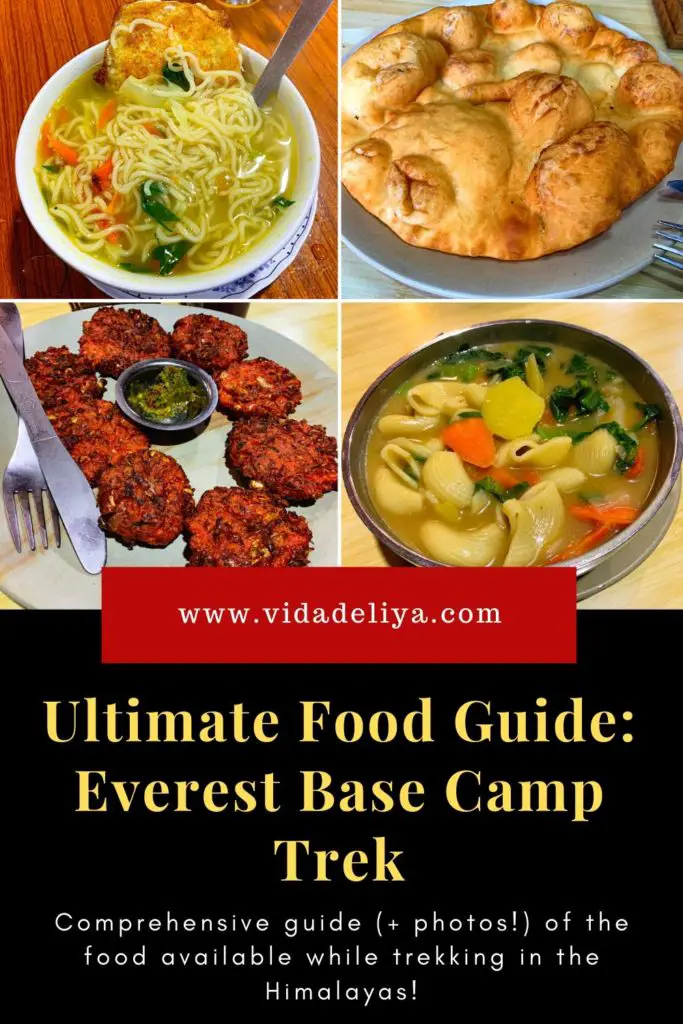
12 Comments
Carrie
I love this! There are some very interesting things here and they look really delicious. I’m so impressed with what it takes from the community to provide for the climbers.
Iuliya
YES! We were so impressed by the variety and quality available at all the tea houses too. So well done. 😀
Michelle
Wow! This is such a detailed post about the food at Everest base camp. There are several things on here that sound really good. I would especially love to try the fried rice. I bet it was amazing.
Iuliya
Fried rice is great & really filling too!
neha
being a vegetarian, it’s a delight to see so many vegetarian dishes in the list. I guess I might plan a trip to the Everest base camp just for some yummy food 😀
Iuliya
Yes, they have food that caters to pretty much everyone!
Kelly
you were certainly fed well during the hike. Good tip on not to eat the meat! You would have to fill up on protein through snacks for sure.
Iuliya
Snacks are an absolute MUST! Sometimes it’s just nice to munch on something familiar. 😉
Ophelie
I didn’t know what to expect of a food guide of the Everest base camp but this looks quite good! I would love to try that bread and that honey and that jam!
Iuliya
I still wish I got to bring some of that honey and jam home with me!! 😊
Jen
I have been wanting to do this trek for a while and I honestly hadn’t really thought much about the food so this is really great to know! Thanks for sharing! 😁
Iuliya
You’re welcome!! There are many things to be concerned about when it comes to the EBC trek, but food is definitely not one of them!